Fabrikzeitung 258 – Ted Kaczynski Issue - Rote Fabrik (English Translation)
The New York Times -- Dec 12, 1994
F.B.I. Says Fatal Mail Blast Is Work of Serial Bomber
SHIFT IN INSURANCE TO COVER OIL SHIPS MAY DISRUPT FM
Meticulous in Building His Bombs, Fastidious in Remaining At Large
Protest Letter of Ted Kazcynski against the Showing of his Cabin in the Newseum in Washington DC
List of the Books found in Ted Kaczynski's Cabin on his Capture
The System Projects Its Own Fear
Left, avant-garde and progress
THE PORTRAIT
P.P./Journal CH - 8038 Zurich
DIE ZEITUNG DER ROTEN FABRIK - NR. 258

QUOTE BY EDWARD ABBEY
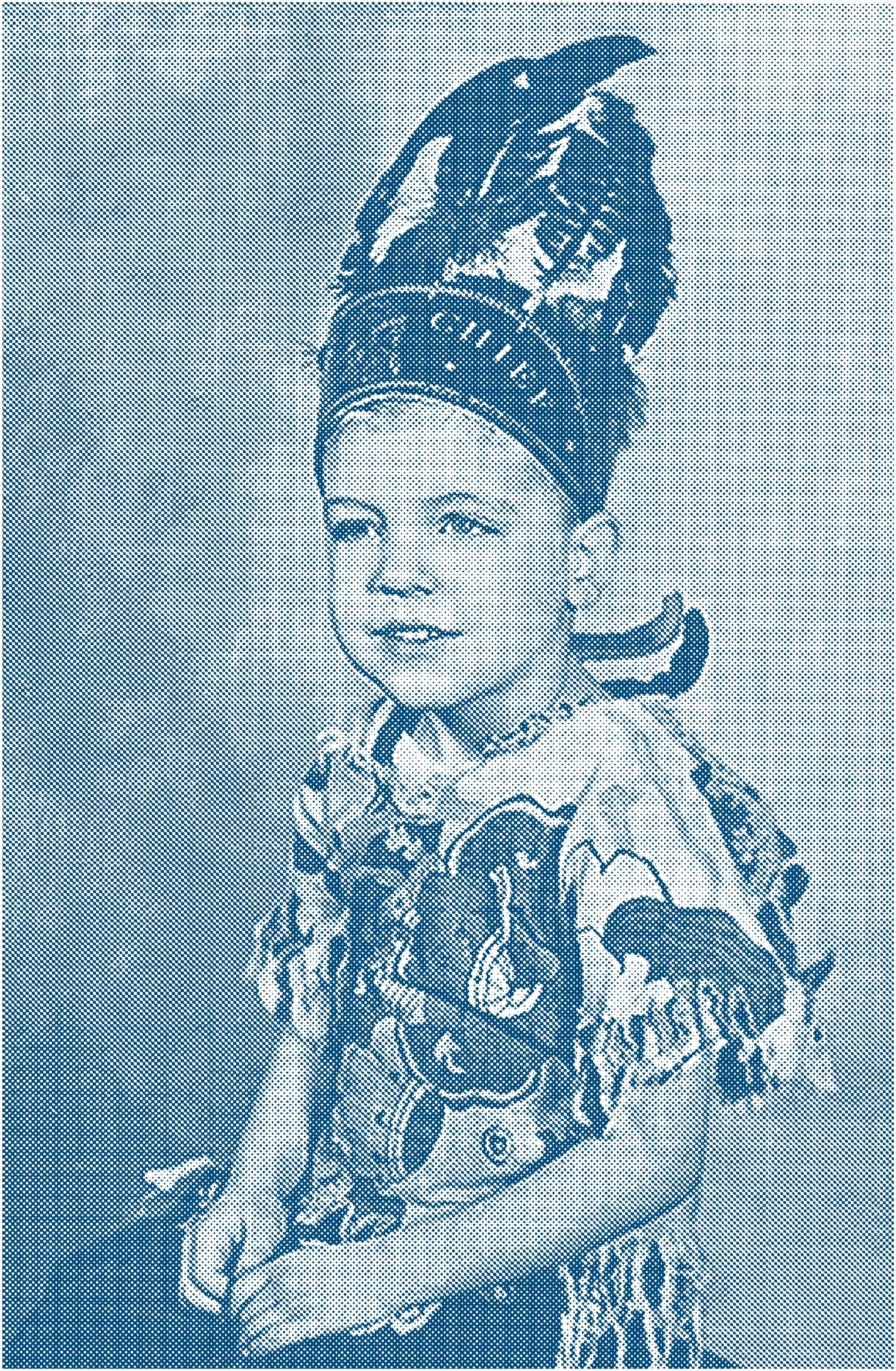
The New York Times -- Dec 12, 1994
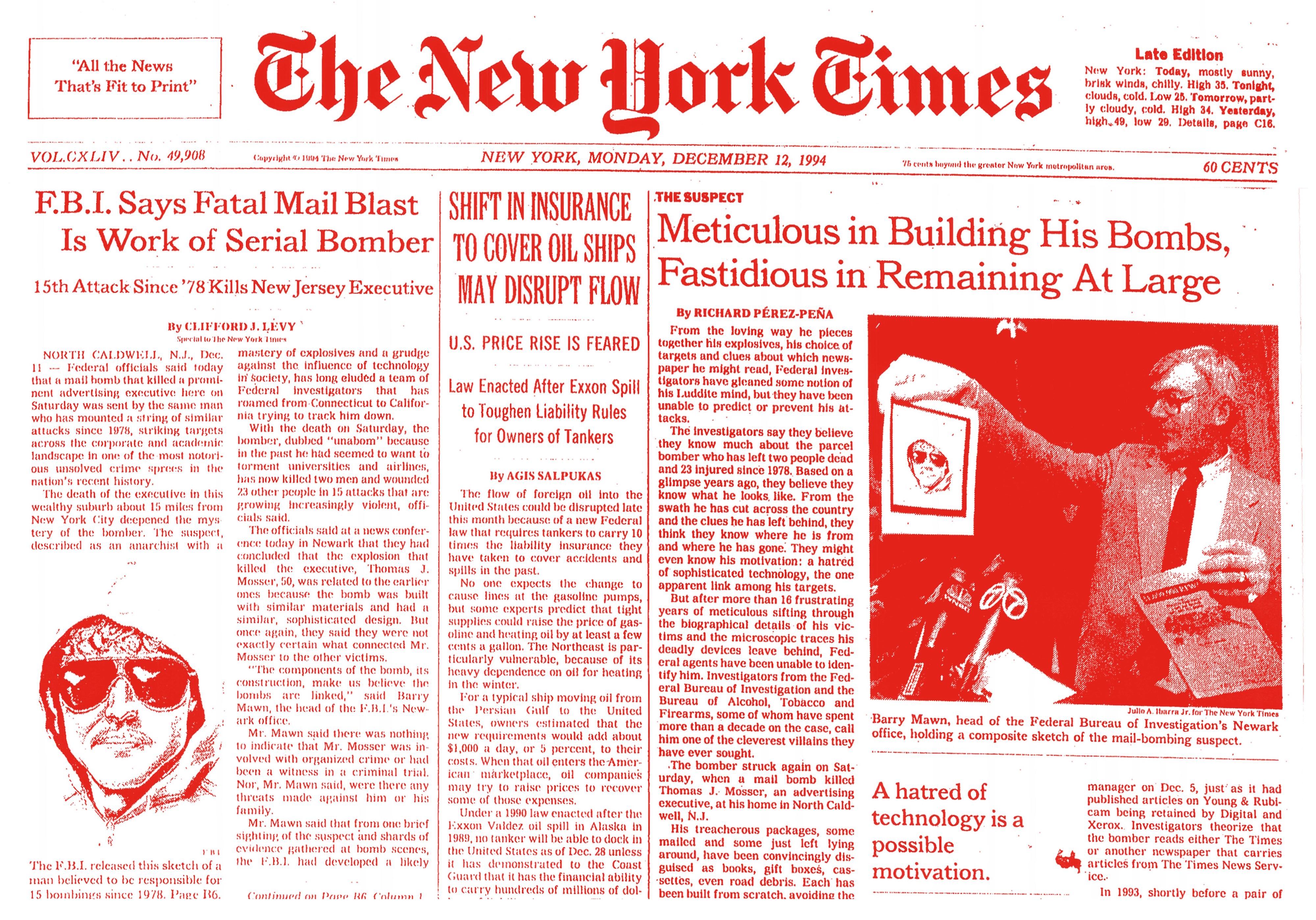
The New York Times, New York Issue, Monday December 12, 1994
“All the News That’s Fit to Print"
VOL.CXLIV.. No. 49,908
Late Edltlon
New York: Today, mostly Bunny, brlsk wlnd», chltiy. Hlgh 35. Tonlght, cloudn, cold. Ix)w 25. Tomorrow, part- ly cloudy, cold. Hlgh 34. Yeaterday, blghw.49, low 29. Detalle, pago C16.
F.B.I. Says Fatal Mail Blast Is Work of Serial Bomber
15th Attack Since '78 Kills New Jersey Executive
By CLIFFORD J. LEVY
Special to The York Times
NORTH CALDWELL, N.J., Dec. 11 — Federal officials said today that a mail bomb that killed a prominent advertising executive here on Saturday was sent by the same man who has mounted a string of similar attacks since 1978, striking targets across the corporate and academic landscape in one of the most notorious unsolved crime sprees in the nation's recent history.
The death of the executive in this wealthy suburb about 15 miles from New York City deepened the mystery of the bomber. The suspect, described as an anarchist with a mastery of explosives and a grudge against the influence of technology in society, has long eluded a team of Federal investigators that has roamed from Connecticut to California trying to track him down.
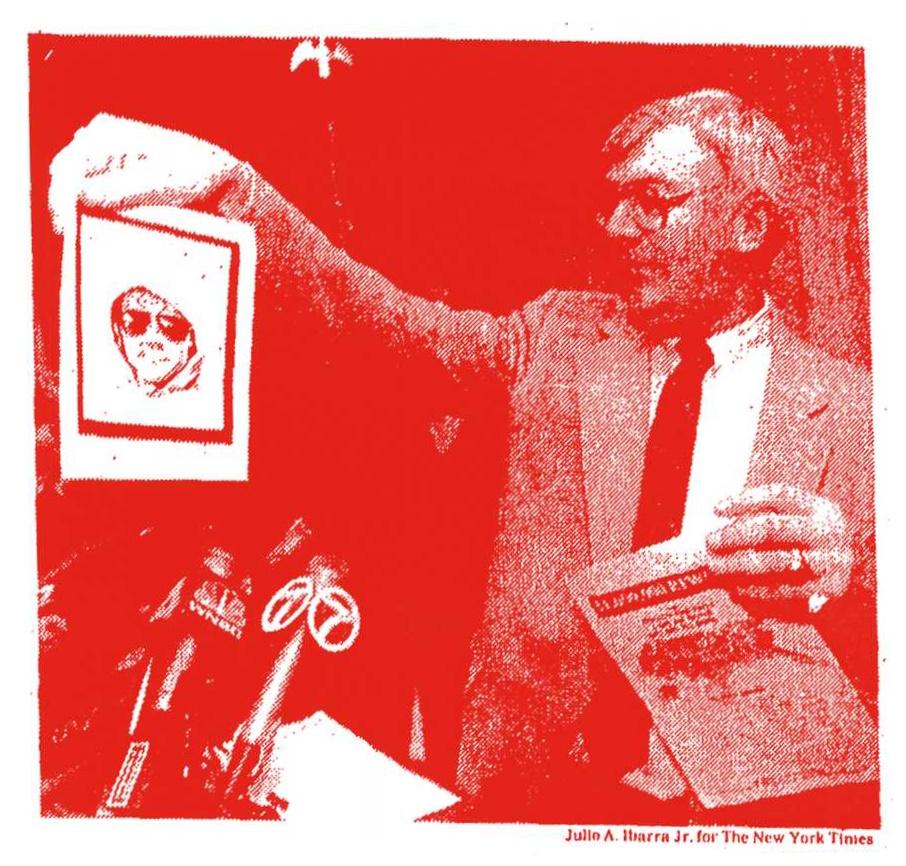
With the death on Saturday, the bomber, dubbed "unabom" because in the past he had seemed to want to torment universities and airlines, has now killed two men and wounded 23 other people in 15 attacks that are growing increasingly violent, officials said.
The officials said at a news conference today in Newark that they had concluded that the explosion that killed the executive, Thomas J. Mosser, 50, was related to the earlier ones because the bomb was built with similar materials and had a similar, sophisticated design. But once again, they said they were not exactly certain what connected Mr. Mosser to the other victims.
"The components of the bomb, its construction, make us believe the bombs are linked," said Barry Mawn, the head of the F.B.I.'s Newark office.
Mr. Mawn said there was nothing to indicate that Mr. Mosser was involved with organized crime or had been a witness in a criminal trial. Nor, Mr. Mawn said, were there any threats made against him or his family.
Mr. Mawn said that from one brief sighting of the suspect and shards of evidence gathered at bomb scenes, the F.B.I. had developed a likely
Continued on Page B6, Column 1
SHIFT IN INSURANCE TO COVER OIL SHIPS MAY DISRUPT FM
U.S. PRICE RISE IS FEARED
Law Enacted After Exxon Spill
to Toughen Liability Rules
for Owners of Tankers
By AGIS SALPUKAS
The flow of foreign oll into the United States could be disrupted late this month becausc of a new Federal law that requires tankers to carry 10 tirnes the liability Insurance they have taken to cover accidents and spills in thc past.
No one expects the change to cause lines at the gasollne pumps, but some experts predict that tight supplies could raisc the price of gasolina and heating oil by at least a few ccnts a gallon. The Northeast is particularly vuhierable, becausc of its hcavy dependcncc on oil for heating in the winter.
For a typical ship moving oil from the Persian Gulf to the United States, owners estimated that the new requirements would add about $1,000 a day, or 5 perccnt, to their costs. When that oil enters the-American mãrketplace, oil companies may try to raisc prices to recover some of thosc expenses.
Under a 1990 law enacted after the Exxon Valdez oil spill in Alaska in 1989, no tanker will be able to dock in the United States as of Dcc. 28 unloss il has demoDsêrated to the Coast Guard that it has the financial ability to carry hundreds of millions of dol-
Meticulous in Building His Bombs, Fastidious in Remaining At Large
By RICHARD PÉREZ-PENA
From the loving way he pieces together his explosives, his choice of targets and clues about which newspaper he might read, Federal investigators have gleaned some notion of his Luddite mind, but they have been unable to predict or prevent his attacks.
The investigators say they believe they know much about the parcel bomber who has left two people dead and 23 injured since 1978. Based on a glimpse years ago, they believe they know what he looks like. From the swath he has cut across the country and the clues he has left behind, they think they know where he is from and where he has gone. They might even know his motivation: a hatred of sophisticated technology, the one apparent link among his targets.
But after more than 16 frustrating years of meticulous sifting through the biographical details of his victims and the microscopic traces his deadly devices leave behind, Federal agents have been unable to identify him. Investigators from the Federal Bureau of Investigation and the Bureau of Alcohol, Tobacco and Firearms, some of whom have spent more than a decade on the case, call him one of the cleverest villains they have ever sought.
The bomber struck again on Saturday, when a mail bomb killed Thomas J. Mosser, an advertising executive, at his home in North Caldwell, N.J.
His treacherous packages, some mailed and some just left lying around, have been convincingly disguised as books, gift boxes, cassettes, even road debris. Each has been built from scratch, avoiding the ...
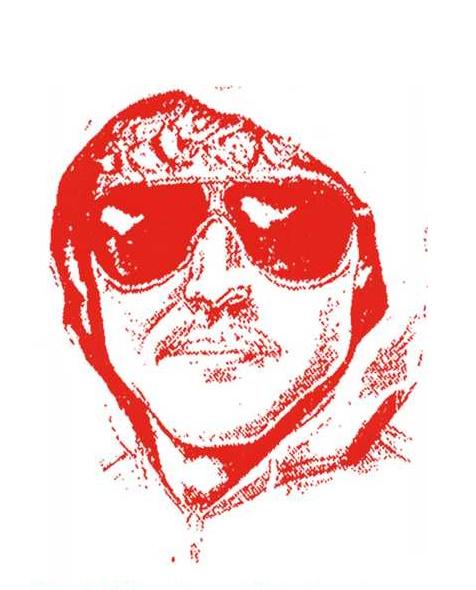
A hatred of technology is a possible motivation.
... manager on Dec. 5, just as it had published articles on Young & Rubicam being retained by Digital and Xerox. Investigators theorize that the bomber reads either The Times or another newspaper that carries articles from The Times News Service.
In 1993, shortly before a pair ...
Road to Revolution Excerpt
... thanks, because I’m not sure that they would want to be named publicly. But above all I have to thank Dr. Patrick Barriot, who has shown me the greatest kindness and without whose generous help this book could not have been published.
For the sake of clarity, I want to state here in summary form the four main points that I’ve tried to make in my writings.
1. Technological progress is carrying us to inevitable disaster. There may be physical disaster (for example, some form of environmental catastrophe), or there may be disaster in terms of human dignity (reduction of the human race to a degraded and servile condition). But disaster of one kind or another will certainly result from continued technological progress.
This is not an eccentric opinion. Among those frightened by the probable consequences of technological progress are Bill Joy, whose article “Why the Future Doesn’t Need US”[1] is now famous, Martin Rees, author of the book “Our Final Century”[2], and Richard A. Posner, author of “Catastrophe: Risk and Response”[3]. N one of these three is by any stretch of the imagination radical or predisposed to find fault with the existing structure of society. Richard Posner is a conservative judge of the United States Court of Appeals for the Seventh Circuit. Bill Joy is a well-known computer wizard, and Martin Rees is the Astronomer Royal of Britain. These last two men, having devoted their lives to technology, would hardly be likely to fear it without having good reason to do so.
Joy, Rees, and Posner are concerned mainly with physical disaster and with the possibility or indeed the likelihood that human beings will be supplanted by machines. The disaster that technological progress implies for human dignity has been discussed by men like Jacques Ellul and Lewis Mumford, whose books are widely read and respected. Neither man is considered to be out on the fringe or even close to it.
2. Only the collapse of modem technological civilization can avert disaster. Of course, the collapse of technological civilization will itself bring disaster. But the longer the technoindustrial system continues to expand, the worse will be the eventual disaster. A lesser disaster now will avert a greater one later.
The development of the technoindustrial system cannot be controlled, restrained, or guided, nor can its effects be moderated to any substantial degree. This, again, is not an eccentric opinion. Many writers, beginning with Karl Marx, have noted the fundamental importance of technology in determining the course of society’ s development. In effect, they have recognized that it is technology that rules society, not the other way around. Ellul especially has emphasized the autonomy of technology, i.e., the fact that modern technology has taken on a life of its own and is not subject to human control. Ellul, moreover, was not the first to formulate this conclusion. Already in 1934 the Mexican thinker Samuel Ramos[4] clearly stated the principle of technological autonomy, and this insight was adumbrated as early as the 1860s by Samuel Butler. Of course, no one questions the obvious fact that human individuals or groups can control technology in the sense that at a given point in time they can decide what to do with a particular item of technology. What the principle of technological autonomy asserts is that the overall development of technology, and its long-term consequences for society, are not subject to human control. Hence, as long as modern technology continues to exist, there is little we can do to moderate its effects.
A corollary is that nothing short of the collapse of technological society can avert a greater disaster. Thus, if we want to defend ourselves against technology, the only action we can take that might prove effective is an effort to precipitate the collapse of technological society. Though this conclusion is an obvious consequence of the principle of technological autonomy, and though it possibly is implied by certain statements of Ellul, I know of no conventionally published writer who has explicitly recognized that our only way out is through the collapse of technological society. This seeming blindness to the obvious can only be explained as the result of timidity.
If we want to precipitate the collapse of technological society, then our goal is a revolutionary one under any reasonable definition of that term. What we are faced with, therefore, is a need for out-and-out revolution.
3. The political left is technological society’s first line of defense against revolution. In fact, the left today serves as a kind of fire extinguisher that douses and quenches any nascent revolutionary movement. What do I mean by “the left”? If you think that racism, sexism, gay rights, animal rights, indigenous people’s rights, and “social justice” in general are among the most important issues that the world currently faces, then you are a leftist as I use that term. If you don’t like this application of the world “leftist”, then you are free to designate the people I’m referring to by some other term. But, whatever you call them, the people who extinguish revolutionary movements are the people who are drawn indiscriminately to causes: racism, sexism, gay rights, animal rights, the environment, poverty, sweatshops, neocolonialism it’s all the same to them. These people constitute a subculture that has been labeled “the adversary culture”[5]. Whenever a movement of resistance begins to emerge, these leftists (or whatever you choose to call them) come swarming to it like flies to honey until they outnumber the original members of the movement, take it over, and turn it into just another leftist faction, thereby emasculating it. The history of “Earth First!” provides an elegant example of this process.[6]
4. What is needed is a new revolutionary movement, dedicated to the elimination of technological society, that will take measures to exclude all leftists, as well as the assorted neurotics, lazies, incompetents, charlatans, and persons deficient in self-control who are drawn to resistance movements in America today. Just what form a revolutionary movement should take remains open to discussion. What is clear is that, for a start, people who are serious about addressing the problem of technology must establish systematic contact with one another and a sense of common purpose; they must strictly separate themselves from the “adversary culture”; they must be oriented toward practical action, without renouncing a priori the most extreme forms of action; and they must take as their goal nothing less than the dissolution of technological civilization.
Excerpts from Ted Kaczynski: The Road to Revolution. Editions Xenia, Vevey 2008.
Editorial
Until April 3, 1996, Theodore Kaczynski was the most wanted person in the United States. Between 1975 and 1995 he sent a total of 16 letter bombs to various key people in research and business. The US federal police searched in vain for the perpetrator, known as the Unabomber, for years. Speculation about his person and the background to his actions occupied the media for a good twenty years. In 1995 he announced that he would kill more people if his manifesto “Industrial Society and its Future” was not published. The reporting reached a final peak with the publication of his manifesto and the arrest of Theodore Kaczynski the following year. If it did not dismantle his criticism of technological society itself as the error of a confused fanatic, then it at least condemned his chosen means. Theodore Kaczynski was sentenced to life in prison at the SuperMax Penitentiary in Florence, Colorado for illegally transporting, shipping and using bombs and killing three people.
It has been 15 years since the manifesto was published; Many people are no longer familiar with Theodore Kaczynski, the small distractions are too numerous, the individual perspective is too important. The change in technological society has rarely been as evident as in the last ten years. It appears that after his arrest the “Network”[7] took control. The fact that Kaczynski is not alone with his ideas and views on technological development is evident in the concerned voices of other recognized people from science and politics.[8]
Together with 60 students from the Ecole cantonale d'art de Lausanne (ECAL), the processing of the case in media, art and history was re-examined. What influence do the strategies of media representation have on the public perception of the perpetrator and victim, what significance does the position within technological society play, and what parallels can be drawn to other cases? How was the system attacked and how did the system fight back? And: what position does the left take on this?
It is clear that this edition is not alone in this concern: in 2008, the Vaud publishing house Xenia Press published the first authorized collection of Theodore Kaczynski's texts[9] and in October 2009 an exhibition about him took place at the Pa-lais de Tokyo in Paris. To what extent do we allow ourselves to give up a small piece of autonomy with every step and why is the system still not infallible?[10] Whether we can contribute to clarification remains to be seen.
Family Pictures
Inside cover
Ted Kaczynski in costume as a kindergartener, circa 1947. The Evergreen Park of the early 1950s held a special fascination for Ted and his younger brother Dave, as well as their father, Turk, a sausage maker who cherished the outdoors. It was a sense of wilderness embodied bythe sprawling field across the Street from the new home. The sun sparkled off the meadow's bits of iron pyrite - fool's gold - which the neighborhood children collected and coveted. The Kaczynskis picknicked in the Paios Hills Forest Preserve, and swam in Lake Michigan on visits to Michigan's Warren Dunes State Park. The boys hiked with their father and huddled over campfires as Turk told stories about what life was like for early Native Americans.
4
Ted Kaczynski about age 6.
5
Ted (top) and Dave Kaczynski during a family outing at an Illinois forest preserve in the early 1950s. Later in life, Dave carne to believe his brother's affinity for the woods was different from hisown. «I got the sense that it was an escape from people,» he said, «from cultural and social stresses that he didn't want to cope with.»
6
Ted Kaczynski with his brother Dave and his pet parakeet. Ted, age 9, and David Kaczynski, 2, with the family's pet parakeet in 1952, the year the family moved to south suburban Evergreen Park. This favorite family photo sits in a hallway, on a table near Wanda Kaczynskis bedroom door. The photo was in the room when Gary Wright, Teds 12th bombing target, first met Wanda almost a decade ago.
7
Dave and Ted Kaczynski on a family camping trip in 1956, when Ted was about 14 years old. The year before, the older brother had already started to struggle with traditional morality. In a journal entry, Ted recounted seeing a girl on the Street when he was 13: «So her appearance antagonized me, and, from habit, I began looking for a way to justify hating her, within my logical system. But then I stopped and said to myself, 'This is getting ridiculous. I'll just chuck all this silly morality business and hate anybody I please.' Since then I have never had any interest in or respect for morality, ethics or anything of the sort.» At age 15 he would earn a mathematics scholarship to Harvard University.
8
Ted and Dave Kaczynski outside their Evergreen Park home in 1958. Ted was graduating early from Evergreen Park Community High School and would go on to Harvard and then the University of Michigan. Dave also would graduate early from high school, and attend Columbia University at age 16.
9
Ted Kaczynski as an assistant professor of mathematics at the University of Califórnia, Berkeley, in the late 1960s. At Berkeley he was excruciatingly shy, to the point that his students scorned him. Ted shunned mathematics and technology. He would later move to Montana and bomb this campus twice.
10
Ted Kaczynski is in the background of the photo, which shows his grandmother Helen Kaczynski (left) and cousin Kathy Kaczynski during a family gathering in Evergreen Park circa 1965.
11
Ted Kaczynski as student of Harvard in 1962.
12
Ted Kaczynski in the family's lowa apartment in the late 1960s, in his mid-20s. By this time, hewasa professor at the University of Califórnia, Berkeley. Shortly thereafter, he began to withdraw from society and wander. Given the ethos of the time, brother Dave said, Ted's «dropping out seemed like almost a heroic thing.»
13
Ted Kaczynski over a car near Lincoln, Mont., in the early 1970s, after Ted had settled outside the small town, immersing himself in a self-imposed survivalist retreat. He shunned electricity, poached wild game and grew his own vegetables. Here he started building bombs--primitive devices, with triggers fashioned from match heads.
14
Ted and his father, Turk, during a visit to Ted's Montana home in the early 1970s. Ted's journal entries from this period show he was no environmentalist, even though the public would later perceive the Unabomber asan eco-crusading Luddite. «I don't even believe in the cult of nature-worshippers or wilderness-worshippers. (I am perfectly ready to litter in parts of the woods that are of no use to me...),» he wrote.
15
Ted (left) and his brother (far right) with some of Dave's friends at the Kaczynski family's home in Lombard in 1978.
16
Ted Kaczynski and his mother, Wanda 1978. After Dave fired Ted from his factory job for harassing a female supervisor, Dave traveled to Texas which became his sanctuary. The brothers later would reconcile.
17
During his stay in Lincoln, Mont., Ted Kaczynski shunned electricity, poached wild game and grew his own vegetables. But the Montana retreat only seemed to fuel his isolation and bizarre behavior.
18
Ted Kaczynski outside his parents' home in west suburban Lombard in 1978, the year he delivered his first bomb. The bomb was weak, injuring the officer's hand. In a journal entry from 1977, Kaczynski laid out his plans to kill. «I emphasize that my motivation is personal revenge. I don't pretend to any kind of philosophical or moral justification. ... My ambition is to kill a scientist, big businessman, government official or the like. I would also like to kill a Communist.
Cabin Pictures
1
Bill Sprout, of Ennis, Mont., drives the Unabomber's cabin with a Califórnia Highway Patrol escort through Emigrant Gap on Interstate 80 in early December 1997.
2
Employees at a Sacramento storage company turn the Montana cabin of Unabomber suspect Ted Kaczynski upright before storing it in a warehouse at Mather Field in December 1997.
3
Members of the news media view the cabin that Unabomber Theodore Kaczynski lived in, after it was moved out of storage facility in Rancho Cordova, Calif.
4
Bill and Supervisory Special Agent, David Alford, posed in front of the cabin used by Ted Kaczynski, the Unabomber. They «processed» the cabin in April 1996 and collected more than 1,000 pieces of evidence.
5
The cabin that Kaczynski built while living in Montana has been held in storage in Rancho Cordova CA
6
Photographer Richard Barnes originally photographed the Unabomber cabin on assignment for the New York Times magazine in 1998. At that time the cabin was in a warehouse in Califórnia, where it was being stored as eviden
7
Daniel Joseph Martinez' The House that America Built (2004).
Martinez reconstructed a full-scale replica of Kaczynski's clapboard cabin, wedged awkwardly at a raking angle into the gallery space and split vertically (Gordon Matta-Clark-style) down the middle, as if being dissected to see what bland horrors it contains. But inside it is empty, just an uninviting void of raw plywood.
8
«Pause» by Chris Larson, was shown at Rare gallery in 2005. It had a car crashing into it - actually a repro of 'The Dukes of Hazzard' '69 Dodge Charger - made of lumber, too.
9
Kaczynski's 10x12-foot cabin is the central artifact in an exhibit chronicling the FBI's first 100years (the residence is found in a section titled «A Mad Bomber and His Manifesto»), Kaczynski sought to call the appellate panel's attention to the Newseum display since the judges have been dealing with the killer's bid to halt the auction of his journals, correspondence, and lengthy manifesto. The subject of the privacy ríghts of Kaczynski's victims has been frequently addressed in recent Court of Appeals filings.
10
According to the Washington Post, Ted Kaczynski, is protesting that his Montana cabin, the site of his eventual capture, is part of a display at the Newseum: «I recently received a page from the Washington Post, 3une 19, 2008, page A9. This comprises a full-page, full-color advertisement that features my cabin, which is being exhibited publicly at something called a «Newseum». Since the advertisement States that the cabin is «FROM FBI VAULT» it is clear that the government is responsible for the public exhibition of the cabin. This has obvious relevance to the victims' objection to publicity connected with the Unabomber case».
Read the complete Letter on the opposite Page.
11
Alois Mosbacher hat in seiner neuen Bilderserie «My Cabin» das Blockhaus von Ted Kaczynski in Montana gemalt.
12
Matt O'Dell: «Industrial Society and Its Future», Unabomber's Cabin, Montana, 1996 (2006)
36 x 34 x 26.5 cm — Wood, wood stain, metal, modelling details, Video and soundtrack Pilar Corrias and Adam Prideaux, London
13
The Unabomber's Cabin, from the series Buildings of Disaster by Constantin Boym and Laurene Leon Boym (bonded nickel)
14
Montana Cabin
(Larry Sanders / The Last Best Place) 2007 by Harry Blackett
«The Unabomber has been referenced in the work of Jamie Shovlin and Seth Weiner. Two years prior to Kaczynskis Capture, on the fictional televisionai talk show, The Larry Sanders Show, Larry Sanders (played by Garry Shandling) moved to a Montana cabin as an escape from N.Y./L.A. celebrity culture. I was interested in this juxtaposition and how real-life seemed to be mirroring TV, rather than the reverse. ,The Last Best Place' is a Montana State slogan».
15
A remake of the Unabomber's cabin is installed in the warehouse-like space at Exit Art in NYC. Playing on a 1969 Pioneer stereo within the cabin is a digitally synthesized reading of «Life Without Principie» by Henry David Thoreau. An array of tactile transducers, which vibrate at infrasonic frequecies, is mounted to structural elements beneath the cabin's floor, and is driven by the stereo's audio signals. Thus, the Unabomber's cabin literally resonates with the words of Thoreau. The vibrations propagate up from the floor, through the soles of the feet, and into the viewer's body. The words are audible as a muffled rumbling voice produced not by an actual speaker, but by the boards of the cabin itself.
16
Robert Kusmirowski's sculpture «Unicabine» New Museum in New York 2008
17
Cover of the 10th Issue of the Palais de Tokyo magazine showing the picture «Unabomber Cabin, Montana 1998» by Richard Barnes. This issue is dedicated to the exhibition «Chasing Napoleon».
18
The Students Cabin at ECAL during the «Image & Imagery» Workshop November 2009.
The Cabin & The White Cube
Regardless of the fact that he had just set fire to acres of forest land on a fateful camping trip, Henry David Thoreau moved into a self-built cabin in the woods of Massachusetts not far away in the woods of Massachusetts on July 4, 1845, Independence Day, to keep company to withdraw. The hut, which measured barely five by three meters, was more than an amateurish attempt to build a house; For him it was a criticism of the illnesses that plagued 19th century America and a philosophical and political manifesto for self-sufficiency. In his work “Walden. "Or life in the Woods" (German: Walden). He described his simple life on the lake and its nature, but he also integrated topics such as economy and society.
With his dwelling, Thoreau founded a long series of utopian hermitages that were built out of frustration, resistance or visionary expectations. The series also takes us to the humble abode of Professor Theodore J. Kaczynski. After he gave up his previous academic life in 1972 to escape what he perceived as the wrong American technological-industrial system, Kaczynski also moved to the wilderness of Montana. However, in the hut, which was not unlike Thoreau's prototype, Kaczynski did not pursue the civil disobedience that Thoreau later founded. Rather, he built the letter and parcel bombs there, which he sent to representatives from research and business he selected over the next 20 years.
After Theodore Kaczynski's arrest in 1996, the cabin was transported to the FBI's evidence warehouse, and the interior of the cabin was inventoried and archived. It almost stayed that way, because after the trial was over, the hut was to be destroyed. The cabin owes its fateful preservation to Scharlette Holdman, an investigator in Kaczynski's legal defense. At the time, no one could have imagined that over ten years later numerous works of art would refer to the hut. America has a long tradition of maintaining its ties to criminals through museums or tourism. Famous people like Jesse James and Al Capone have even had their own museums.
It is therefore not surprising that the American state would sooner or later also like Kaczynski's hut. In an exhibition about the first 100 years of the FBI that opened in 2008 in the Newseum in Washington, the cabin is displayed as an authentic artifact of the largest investigation to date9. However, the actual loot show began in 1998, when photographer Richard Barnes photographed the hut in a Californian warehouse on behalf of the New York Times Magazine6. Apart from this documentary reference, there are artistic works that use the hut in different ways. As a motif for oil paintings, sculptures, or as a pure reference; the hut has become a pop culture object. Only a few works seem to reflect this aspect. In the exhibition at the New Museum in New York, Robert Kusmirowski denies visitors access to his "Unicabin" 16 and, as with the dilemma surrounding Schrõdinger's cat, leaves it open whether the revolutionary ideas are still alive in it or not it has already been auctioned. The fact that the exhibition in New York took place at the same time as the FBI exhibition in Washington was probably more of a coincidence. While in the latter the hut is accessible and thus serves as (empty) proof of the overcoming of evil, Kusmirowski seems to be more respectful of the ideas contained therein.
Kusmirowski is not the only one who is denied access to the hut. Daniel Joseph Martinez also leaves the hut locked in his work7. However, his external references to Gordon Matta-Clark and Martha Steward's popular color palette seem to be aimed at criticizing the middle class. The inner emptiness is evident and intentional. However, access does not have to be denied at all costs. In his installation “Pause”, Chris Larson gives the visitor a violent insight into the interior of the hut by having it run down by the 1969 Dodge Charger from the popular 1970s TV series “The Dukes Of Hazzard”.8. The American entertainment industry vs. the Unabomber.
Only Seth Weiner15 tried to draw the connection back to Thoreau's exile. In a walk-in replica of Kaczynski's hut, he has a digitally emulated, incomprehensible voice recite parts of Thoreau's "Life Without Principie". The hut set up at the Ecole cantonale d'art de Lausanne (ECAL) was also accessible. In the middle of an open-plan classroom for more than 100 students, it served as a refuge. Both Thoreau and Kaczynski spent much of their time in their self-imposed exile thinking about what they could best do to the nation and how society could be changed for the better. The ECAL students didn't have much time for this; Built in a week in which there was no central supervision, the hut had to give in to the rules of the system again after just two days.
In July 2008, Theodore Kaczynski unsuccessfully tried to prevent the exhibition of his cabin at the Newseum in Washington. It is not known what position he takes in relation to the numerous other works.
by Salomon Proust
Legal Documents
Protest Letter of Ted Kazcynski against the Showing of his Cabin in the Newseum in Washington DC
No. O6-IO5/4-
...
Ted Kaczynski has filed a lawsuit seeking the return of items seized from his Montana shack, claiming that the material is a boon for «serious researchers» and would «help to reveal the true facts» of his criminal case
...
List of the Books found in Ted Kaczynski's Cabin on his Capture
...
The System Projects Its Own Fear
An interview with Slobodan Despot, founder of Xenia Editions, who has recently published the only version of the manifest by Ted Kaczynski approved by the author himself. Our interest is the censorship problems related to the publishing of the book: The Road to Revolution.
Julien: You are Slobodan Despot who created Xenia Editions in 2005?
SD: Yes, I am.
Dimitri: We would like to discuss the accusation made by the author in his preface, where he complains about the final version of his text. He pretends that there are a few mistakes left but that he has not had enough time to correct them because of the US authorities censoring the text. Could you tell us more about this?
SD: Yes, he was in a hurry to publish his book for practical and political reasons. The US authorities were starting proceedings against him with the objective of seizing what he would earn with a hypothetical publication of his book, as well as prohibiting him to write. At the time of his arrest, there was no legal possibility to do the latter. You certainly know that after 9/11, new laws were passed limiting the freedom of expression of people accused of terrorism, such as the famous «patriot act». Some of of Kaczynski’s writings were labelled terrorist. This is not true: most of his writings are neither violent nor terrorist. As US authorities were after him, he was in a hurry, and had to publish his book with some subsisting mistakes. Being a true perfectionist, somehow in a pathological way, he was really dissatisfied with the situation. He is actually never satisfied with what he has written.
Dimitri: Did he ask anybody to publish his work or did anyone else ask him to do it?
SD: In jail, Kaczynski established a relationship with a few intellectuals and students, which made the publication possible. Patrick Barriot, a French doctor, is a close friend of Kaczynski’s, and they were close enough for Kaczynski to ask him to find a publisher for his first book, and to be approved by him. Doctor Barriot, also a friend of mine, came to me asking to publish it and that is what I did.
Julien: You published this book in 2008. We heard about some legal orders that were about to fall and which hastened the publication of the book. Did these court orders actually interfere with the publication? Is everything Kaczynski wanted to say in the book?
SD: I believe that the essence of what Kaczynski meant to convey was in it. But it is true that some choices were difficult to make, namely relating to the illicit chapter titled «What to do first», in which Kaczynski develops the idea of aggressiveness and murder. The chapter was censored by US authorities, so if we had kept it, it would have put the whole project in danger. We thought it would be clever not to publish the chapter so as to make sure the book would come out. We did not want to see the whole project fail because of one chapter, all the more so because the contents are extremely diverse: manifesto, letter exchanges, ethnological analysis, and that the whole book, excluding the chapter, adds up to 400 pages.
Julien: Was there a sort of judge or a commission who had rights over the writings and who were ready to filter the information?
SD: Yes, there was a lawyer who i gave permission to look over the book. In fact, I gave the book to read to two American lawyers and both stumbled over the «What to do first» chapter. We didn’t want to have Kaczynski’s reputation as a violent man strengthened, nor to let him be considered as more terrorist than he is already. Our purpose was to put at the public’s disposal Kaczynski’s mental world and ideas, and to make allowances between them and his acts.
Julien: Could you tell us in detail the problem with this chapter and its real content?
SD: In the text, Kaczynski explained that if you want to fight against the institutions, you sometimes have to fight physically and declare war without any kind of hesitation. The kind of things the ultra-environmentalists would do, for example. I regret I cannot tell you more about the chapter: as we decided not to publish it, I cannot really talk about it.
Dimitri: Is this text still mentioned by any organisation ?
SD: Today, in 2009, you find it in a lot of publications by ultra-environmentalists or anarchist organisations. That is not our problem. Kaczynski was a criminal and he still is. It took the police a long time to track down the suspect because the man operated alone and it was really difficult to catch him. The population was against him. What we wanted to put at everybody’s disposal was his innovative ideas about the evolution of the contemporary society. Of course he was not the first one to ask this type of questions. But the way he made it was new, that’s why it is important to publish this book. The aggressive aspect does not interest us.
Julien: Is there a court order to seize Kazcinski’s royalties?
SD: Yes, there is. That’s the reason why we signed a contract saying that he has no right over his writings and that he gets no royalties, because those would have gone directly to his victims. So you see, for Kaczynski it’s much simpler to collaborate with a European publisher, because an American publisher would always fear the consequences.
What you need to know is that we finally found an American publisher who agreed to publish the text next Spring, as a co-publisher for the American marketplace. Just because he thinks it’s worth trying it, and also he saw that I wasn’t subject to a court order, neither in Europe nor in the States. They could have tried to seize the copies sold through Amazon for instance, but so far they haven’t. At the end, what I want is a useable document. The Americans did not allow us to publish the controversial chapter, but they didn’t censure it because I did not publish it. Why didn’t I publish it ? Because I feared the consequences? No. I’m against censoreship. The thing is more complicated. Finally, an editor has to make choices, and that is what I did.
Dimitri: So, finally it is the publisher who decides ?
SD: Yes, that’s precisely his job. That’s why I think that the publisher is a key-person in the process of publication. Today you can send your texts to a printing house and make your own book without resorting to a publisher. But the chances are that the book won’t be a commercial success.
Julien: Didn’t you try to resist the pressure? Was there a court order which you could oppose ?
SD: How could I, from Switzerland, make myself heard while legal decisions were taken in the States? You know, we could have ignored them but then the English version would not exist. It would have been pure provocation against the US authorities and that was not my intent. It is not impossible that the whole text will be published in the future, but I believe the American justice will not change that kind of decision right now.
Julien: Kaczynski made bad use of his ideas. Would it be possible, for you, to make good use of his theories?
SD: Of course, a lot of people around him are peaceful. They are not terrorists or violent. They are university teachers or students, people feeling concerned about environmental and technological issues. Kaczynski influenced all the actors of the decreasing movement. Those people would never tell you that. A lot of people near the decreasing are saying that the Unabomber is a dangerous and crazy terrorist. For me and for a lot of other people, he is a man who speaks out loudly saying that the system has to change. I don’t believe he regrets his acts. He is a militant. And he is consistent: he lives in a hut, uses no electricity or any other industrial produce. He would like everybody to live the same way. The end justifies the means, that is what he means. If I kill somebody living inside the system, it’s no big deal because I am achieving what I think is right and important. He would also ask: What are the real, right weapons? I am powerless and lonely, I am a mathematician. I keep sending letters and essays to important newspapers to warn them about the dangers of our society, but nobody is listening to me. The point is that we are heading towards the complete destruction of our planet. Anything is better than the destruction of the planet, even murder.
Dimitri: In your opinion, is there a difference between the «American» and «European» way of considering the publication?
SD: In Europe, that kind of problem would be less important and people would not be as afraid of the publication of the chapter, rough and brutal as it may sound. In the States things are more complicated, as American society is a moralizing society. To read texts by Kaczynski is perceived badly, there is a moral fence so to say. Here it is different: for us it is quite obvious that on one hand Kaczynski is a criminal and a murderer, but that before that, he was also a mathematician, a scientist and a philosopher, and we know how to make allowances for both. For most of the Americans he is just one: a terrorist.
Since 2001, Americans are very reactive to the word terrorist. That’s the reason why I couldn’t find anyone who would distribute or publish the book in the States. I looked for an agent who would help me find a co-publisher, so the book would get into the distribution network to which I, as a European publisher, have no access. The agent I found said that she was sorry but she couldn’t do the job because she volunteered in an association concerned about the victims of terrorism. Another problem for an American publisher is that Kaczynski, apart from his three life sentences (if I am not mistaken), was also condemned to pay 5 million dollars to the victims’ families, so any benefit resulting from the publication of any of his texts would directly go to the victims. Obviously he will never be able to pay such an amount of money. Which makes it impossible for any publisher to earn money with Kaczynski’s texts. Another type of difficulty is that the royalties are all automatically taken by the IRS (Internal Revenue Service) and the administration, another reason why it makes no sense to publish the book.
Julien: You spoke of the approaches you made to American publishers who wouldn’t publish the texts. Actually they are censoring themselves without even suspecting that they are doing so...
SD: Yes, I think that the main censorship is self-censorship. Explicit, objective censorship is very unusual. Most of the time people don’t even dare speak out for fear of the consequences, so they keep their own words or writings for themselves. The system is not that repressive. My idea is you have to attempt doing something; if I had received a bomb or been put into jail, then it would have been very clear that the system is repressive and that our society cannot accept it.
Julien: Would you define yourself as inactive in a way?
SD: Yes, I’d rather be passive. Then you have these fears that we project on the world, on what can be said or not. The important thing is to attempt doing things, always.
Gent: The system projects its own fears, in fact.
SD: Obviously, we live in a system based on fear. The system is in fact hard, but in a passive way, which may be the most dangerous way anyhow.
F For Fake
Felix: Can we explain to you what we have in mind ?
Julien: What we are trying to do is a documentary film that does not have the same value as a journalistic film. We are trying to do a reality-fiction documentary on Kaczynski. Because we can easily extrapolate his words. We don’t know yet if it is worthwhile doing that. We would like to talk about a fake article or chapter that would have been censored because of an American law forbidding that chapter. We would also like to make our teachers believe until the last day that we’ve discovered something new on this case. With your help, we can create a really valuable document.
SD: To make short, you’re planning a hoax ? You want us to imagine that the book was censored ?
Julien: That’s what we want to pretend. Our hope in coming here was that you would suggest an idea, an element, or an article in the book that would have been censored. Something simple and interesting that is trust-worthy. We want you to be an actor for this second part of the interview. We don’t want to talk about the content of the censored part but more about the fact that the book was censored. The content will just be mentioned.
SD: For example an article about Kaczinsky calling for bloodlust ?
Julien: Yes, we did such hypotheses... We could tell people that he had a confederate.
SD: So I would have to explain why this chapter isn’t in the book ?
Julien: Yes. We care about making our purpose credible. What we would like to do is to pretend that the book has been under pressure and been censored.
SD: Ok. But what if the case gets published?
Julien: No, it will never get out of our school, we can sign a paper if you want.
There might be a chance that it gets published in the «Fabrikzeitung», a cultural-artistic underground magazine based in Zürich. So this fictional part must be seen from an artistic point of view. In any case, it will be clearly stated that these documents are fake.
SD: Ok. Let’s do it!
Felix: We took a leaf out of the documentary that pretended no one ever walked on the moon. When you watch this documentary, you never ask yourself if it is fake because of the credibility of the scientists explaining and telling facts that even landing on the moon is simply impossible.
SD: Indeed.
Julien: That’s a concept that interests us.
SD: Ok, let’s try!
Julien: Ok. I will pretext to ask a question about the book.
Dimitri: Shall we do it ?
Slobodan Despot: Yeah, let’s go !
The Notes
The first day, we discovered a small Vevey-based publisher who in 2008 published Ted Kaczyinski’s book, A road to revolution. We decided to try and meet that publisher, Slobodan Despot, whom we had only known for a few hours, through several google-found videos, and got an appointment with him for the following day. Before that meeting we had only had a few hours to get briefed on a topic we surely didn’t overcome. We realized we weren’t real reporters and had to do something different, something we could master. We immediately thought that Slobodan’s notoriety and credibility could help us in a way.
This is how we decided to script the interview in progress during the week. Conceptually, inventing a story that we would make credible by many ways was the best option. We focused on Slobodan Despot’s interest for the Kaczynski case, and asked him questions about the making of the book. Had there been any censorship? Did the US authorities have an eye on the writings before they got published, as we had assumed? Did Ted Kaczynski have the possibility to express himself as freely as it was supposed? Unfortunately, or maybe not, the answers had nothing of an American movie: there was no censorship, the US authorities couldn’t care less and therefore, Kaczynski could express himself as freely as an African swallow in springtime. It is only after we got those answers that we explained to Slobodan Despot the true point: faking. He kindly accepted to play our game and suggested to us the content of a pretended missing chapter of the book, where Theodore Kaczynski would have written texts totally unacceptable for the American self-righteous society, in which he engaged people to take up weapons and fight. We also got several materials to play with, including a hand-written letter from Kaczynski to Slobodan. We built up fake letters from this one, having Kaczynski say that there was no chance his book would ever be published without that missing chapter. To give even more credibility to our own William Karel’s Opération Lune, we found the articles of the new US Patriot-act limiting communications for terrorist inmates. With these, no one would doubt our story. A font was also designed, based on aczynski’s writing that we copied on his letter. The font is ugly and has no use, but conceptually goes along with our matter, giving a theoretical opportunity to fake documents.
Another point was that one of the two persons following the project during the week, was aware of our fake tv-show documentary, whereas the other one was our «victim». So we had two different points of view, one on the project from the outside and another one giving «conscious» advice. Even if we strongly suspect Gregor telling his friend Yvan. Or maybe Yvan pcked up the hoax by himself... He does look smart... Anyway.
As we were interviewing Slobodan Despot, we also had a camera hidden somewhere in a corner of the room. This way we had the full conversation video-recorded, storing up evidences against ourselves. We were able to make two movies, one showing what we wanted to be believed, and the other one, backstage.
At the end, telling any story using the good old «aesthetics of truth» would have worked alike. Thanks to Magritte, everyone knows pictures lie all the time. So does any media and it is no luxury to remind it.
The Media & The Message
In every public crime case, television and newspaper try to get the best view on the locations, the crime scenes, to show & prove the traces of the real. Bloodstains and murder weapons provide intense pictures and guarantee vast public attention. Looking at such images several years later, they develop to a documentation of past reality, the blur and get the emotional spin of a Hollywood movie. Additional to the shift of meaning during time, there is an other interesting coincidence in how crime cases are displayed in the media. There is a striking parallel between how criminals are photographed and how stars are being tracked by paparazzi photographers. While the criminal is, during his arrest, often escorted by police officers on each side, the star is being accompanied by the bodyguards. There is as well a idea of physical submission in that, either by the police or the paparazzi: While the first use guns to control their suspect, the second aim at the stars with long lens cameras. Additional to that, and even moor important is the conceptual resemblance: Both paries share the same iconic status because of their large public interest.
1
Trailer for the angled news coverage of ABC News Network. The television network is famous for its trash journalism and did vast coverage on the Unabomber after his arrest.
2
Biography - Ted Kaczynski, the Unabomber. Documentary DVD with fairly basic information on Ted Kaczynski. Nothing really new from any other news sources, but a quick summary.
3
Special issue of Newsweek magazine in 1998.
4
Special report issue of Time Magazine after Ted Kaczynskis arrest.
5
Unabomber - The True Story, 1996. A TV-pleasing film staring Robert Hays whom gained fame from the comedic Airplane movies and TV actor Dean Stockwell. A poorly edited movie with bad acting.
6
A fictional trailer by a ECAL students group for a possible feature film about the Unabomber in the near future. Made out of snippets of more or several blockbuster movies. The trailer implies the never changing habit of Hollywood to be cauth in a loop.
The following films were used for the collage: Mon Oncle, Les Barbouzes, Ne nous fâchons pas, The Shining, Paris Texas, Usual Suspects, Donnie Brasco, Ronin, Enemy of the State, Le Créateur, Les Rivières Pourpres, Blow, Man On Fire, Garden State, Collision, Romanzo Criminale, Munich, Collateral, Lord of War, Le Tigre et la Neige, Broken Flowers, The Serpent, Casino Royale, Zodiac, Surviver avec les loups, No Country for Old Men, Into the Wild, American Gangster, Mesrine, Public Enemy N°1, Las Vegas 21.
7
A secret level of the early first person shotter Duke Nukem 3D shows a poster of the Unabomber wanted sign. The game was released on January 29, 1996.
Original location of real and fictional crime scenes, seen trough the artificial eye of Google Streetview. The short clips shot the locations of the attacks on the following people: Cheddar Bob, Danny Vinyard, Kate Wheeler, Diogenes J. Angelakas, Chad Feldheimer, Charlotte Jean Palmer, Daniel Hiers, Arletta, Julie, Robert Paulson, Ann Farber, Vito Corleone, Frenchy, Walt Kowalski, Mickey Cohen, Joseph Allen Garcia, Leon, Larry Porter Chism, Robert Lee King, Montoya, Rita, Llewelyn Moss, Sannon Zielinski, Thomas Mosser, Terry Benedict, Joey Doyle, Franki Manoldi, Percy Wood, Paul Merle Eischeid, Amina Agisheff, Vincent Vega, Miss Torso, Mr. White, Gary Wright, Frederick McLean, Edmund Kemper, Andy Walker, Andy Dufresnes Wife, Pilcher, Senator Morton, Aaron Lopez Garcia, Terry Marker, Martha Vickers, Rachel Dawes, Captain Queenan, Jan Edgecomb, Miles Arched, Jack Torrance, Luther, Gilbert Murray, Calpurnia, Nicklaus Suino, David Farraday, Betty Lou Jensen, Janet Smith, Patrick Oliver, Randy Mark Yager, Lee Allen,
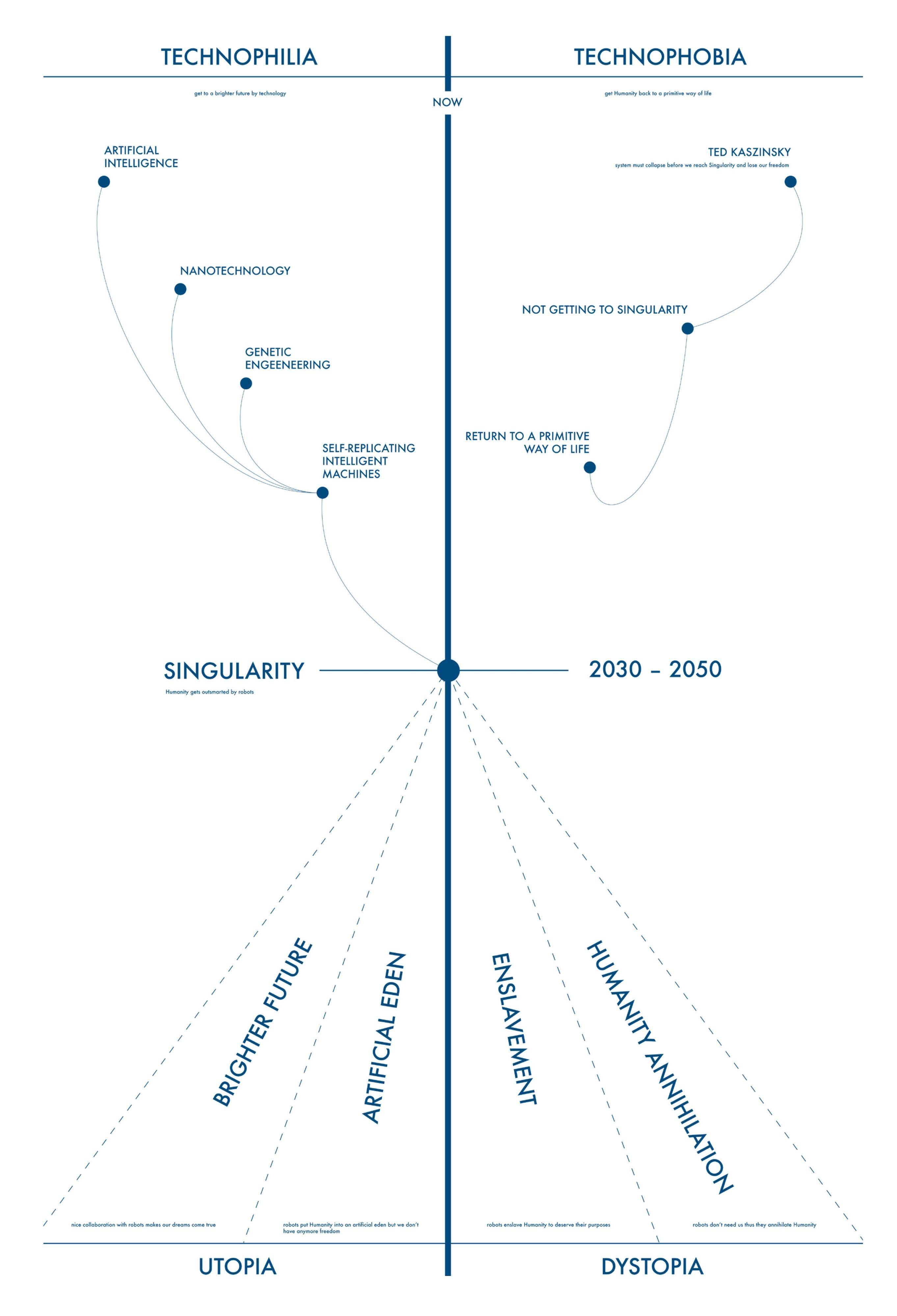

Left, avant-garde and progress
How does the left feel about technical progress? Is every technophile movement automatically left-wing? Would Jimi Hendrix have become an icon of the counterculture even without the wah-wah pedal? A search for clues.
The left's relationship to technical progress differs depending on the left-wing group: There are groups that reject any kind of progress because it only ever serves the power apparatus and perfects existing production processes and power relations. The radical representatives of this view have emerged in recent years as the anarcho-primitivists, who will be discussed later. For Marxists, however, it is not technical progress that is the problem, but rather the distribution of the means of production. Hackers and representatives of communication guerrillas, on the other hand, not only use new media such as the Internet for subversive actions, but their actions have in some cases even advanced the technical development of the Internet. The situation is similar with the artistic avant-gardes, who mostly positioned themselves on the left and, out of their pioneering self-image, always welcomed technical innovations. But does technical progress automatically bring with it revolutionary content? A look at the art avant-garde is particularly suitable as an introduction to the topic - this is where the entire contradiction between technophilia and technophobia manifests itself, for example where the progressive form only conveys reactionary content.
Avant-garde as permanent progress
Last year, the Cologne Museum Ludwig presented “Looking for Mushrooms,” an exhibition about the San Francisco art scene in the fifties and sixties. The title already suggested it: drugs were omnipresent back then. But they were not the center of what was to regroup and ultimately lead to a scene that can be described as left-wing in the broadest sense or at least as “counterculture”. The focus was on something completely different, namely the creative use of different media and their combination. Something that is now called intermediality. Conventional works of art were hardly visible in the Cologne exhibition. Lots of videos for that. The art avant-garde at that time was mostly fleeting and interdisciplinary. She used the latest technical advances to create works that defied the traditional idea of a museum-worthy work of art. If film, as Paul Virilio explains in his book “War and Cinema,” was originally an invention of the military, then it was now leftists who experimented with this medium, explored its limits and pushed it aesthetically forward. “Looking for Mushrooms” exemplified something that was characteristic of the entire artistic avant-garde in the second half of the 20th century: formally, this avant-garde was enthusiastic about technology, but politically left-wing. We are of course talking about a Western avant-garde, not about the state-dictated Socialist Realism in the Soviet Union, which followed the radical early phase of Russian Futurism and Constructivism. And we are talking about a left that is not unified, not precisely defined, and whose lowest common denominator has been an anti-capitalist stance. John Cage, for example, one of the most radical composers of the 20th century, called himself an anarchist throughout his life. There is a quote from John Cage in 1937 that illustrates the enthusiasm with which the artistic avant-garde hoped for technical progress: “I believe that the musical use of noise will continue and increase until we arrive at a music that... will be produced with the help of electrical instruments, which will make every perceivable sound available for musical purposes.» The avant-gardists relied on technical progress because it led to artistic progress. Which in turn corresponded entirely to the capitalist logic of exploitation: the new sells better. One of many contradictions that characterize both the avant-garde and the Western left.
Esoterische Avantgarde
But is that generally true? Didn't the Futurists, whose main representatives later joined Mussolini, show that enthusiasm for technology and progressiveness can also be based on a reactionary and inhumane worldview? And weren't some of the most formally progressive authors of the last century right-wing anti-Semites, including Ezra Pound and Louis-Ferdinand Céline? You don't even have to use such counterexamples from history; Already in the avant-garde, which was moving towards the left, there are numerous examples of the fact that technical progress was formally welcomed, but in terms of content a reactionary or at least esoteric world view often emerged. For example, if you break down Kenneth Anger's formally brilliant films down to their content, you are no longer left with dull Satanism and enthusiasm for Aleister Crowley. It's no different with the works of the Californian filmmaker Stan Brakhage; they leave you breathless, but are about nothing more than spiritual vermilion. Karlheinz Stockhausen, on the other hand, wasted the most modern equipment for electronic music on his “Light” cycle from 1977 onwards, whose garbled religious mythology in the end probably wasn't even understood by Stockhausen himself. There are numerous examples of this kind to be found, not least in the case of John Cage, already quoted, who wanted his own work to be understood in the spirit of Zen Buddhism. This contradiction between content and form, between enthusiasm for technology and esotericism, culminated in the countercultures of the sixties. Technical progress led to strobe lights and crazy light shows at psychedelic concerts. Only the electrification of the guitar and the newly developed effects devices, such as the wah-wah pedal, made the sound of Jimi Hendrix possible. However, what was created in people's minds at that time with the help of technology and drugs was not necessarily progressive and enlightened, but often the exact opposite: retreat into religious and spiritual counterworlds. Escapism. The catalog for “Looking for Mushroom” quotes Paul Krassner, editor of the underground magazine “The Realist”: “Before I took LSD, I was an atheist. Now I understand what God means and I'll stop messing with him." Perhaps it could even be exaggerated to say that the “counterculture” of the late 1960s represented the dialectical counterpart to the general belief in progress in Western society: While the USA was preparing to fly to the moon, its long-haired children went to live with the gurus in India. In an interview with the “Kunstforum” the artist Mike Kelley states that punk did not need to dismantle the hippies because they had already dismantled themselves: “The depoliticization of hippie culture contributed to its mystification. That led to gurus first of all, people becoming Krishnas or Moonies, and then came the rise of the Christian hippie right. I didn't care if they promoted free sex, they were still Christians, and to me that meant they were anti-revolutionary."
LSD and Internet
However, it would be general to label the entire “counterculture” of the late 1960s as esoteric and anti-modernist based on the gurus and sectarians listed by Mike Kelley. Some of the protagonists tried to replace a modernism that was seen as wrong - that of a society that was rationalized through and through - for one that was perceived as right, such as the group around the Californian magazine "Oracle" postulated: the free distribution of clothing, food, Medicine and living space for everyone. There were certainly crypto-fascists like Charles Manson in the counterculture.
What is more interesting, however, is how much the search for a different, better life, possibly even for anti-capitalist models of life, led to an improvement in capitalism. With their interdisciplinary work and the building of networks - terms that we know today from management seminars - the avant-garde and counterculture of the time laid the foundation for today's Silicon Valley. Between LSD and the Vietnam War, the ideas that would lead to the invention of the PC and the Internet were already germinating. Stewart Brand explains this using his "Whole Earth Catalog": Under the influence of LSD, he worked on a catalog that was supposed to list all the "tools" - another managerial term - that were important for the counterculture: What things do I need for a self-organized Life? How does autonomous farming work? What has high quality and costs little? The catalog was intended to be a manual with the help of which one could build an existence largely independent of capitalist society. At that time it was still published in paper form. Apple founder Steve Jobs described this catalog as the forerunner of Internet search engines and their greatest source of inspiration. Projects like this are at the beginning of California's picture-book economic and technological development, as Steward Brand explains: "Solar energy started slowly, as did computer technology... And because the counterculture hippie frame of reference was open to all possible outsiders, “This also attracted computer outsiders and hackers and became their frame of reference and then, in an economically successful variant, it also became the basis for PCs and software accessible to everyone.”
Civilization as disease?
How strong left-wing counter-models to capitalist practical rationalism can have similar foundations, but lead to completely different consequences, is shown, for example, by the criticism of settling down and owning one's own home. In the 1960s, progressive architectural models emerged, especially those of the British architectural group Archigram, whose representatives assumed that the future of humanity would be nomadic. In the near future, it was no longer home ownership and possessions that were considered luxury, but rather mobility. So Archigram developed a model of mobile living capsules that could be connected to the system of so-called plug-in cities. In this way, everyone should be able to carry their house with them like a backpack without having to do without water and electricity. The group of anarcho-primitivists active in recent years around John Zerzan, a former activist in the student protests in the 1960s, also strives to abolish sedentary behavior, but, in contrast to Archigram, argues technophobically: the anarcho-primitivists reject the civilization process as a whole. “Civilization,” they argue, “brought war, oppression of women, population growth, slave labor, poverty, hierarchy, and virtually every disease known to us today.” Similar sentences can also be found in the Unabomber's manifesto. As their goal, the anarcho-primitivists strive for a return to pre-civilization communities, a “rewilding,” which means a return to nature and a “reconnection” with the “natural self” - although with such formulations it is rarely questioned whether it is Such a “nature” and such a “self” are not just constructs and wishful projections. The rest of the left is rejected by the anarcho-primitivists as naively technocratic: “The left does not question any of the fundamental institutions of our social order and therefore reproduces the aristocratic lie of the alleged neutrality of technology.” Regardless of the fact that the primitivist ideas of a "wild community" are unrealizable given the current population density, this "left" criticism of progress, which also rejects medical research, approaches right-wing social Darwinism. For example, the industrial musician Boyd Rice, now a key figure on the right-wing, argues that humanity must be subjected to natural selection mechanisms again because the current social system, in which the “weak” and “sick” are helped, is unnatural. In Boyd Rice's worldview, AIDS is also one of the selection mechanisms that ensure a "natural balance".
Where left-wing criticism of capitalism leads to a general criticism of technical progress and civilization, there is often the danger of an escape into esoteric or spiritual worldviews or an approach to right-wing models of thought that go back to Oswald Spengler's “The Decline of the West”. Gabriel Kuhn, author of the book “New Anarchism” in the USA, among other things. Seattle and the Consequences", in an essay justified criticism of the neo-primitivist world view and therefore demands the following for the left's handling of technological progress: "The historical-political meaning of 'progressiveness' is to face the inevitability of historical change, to recognize these as an immanent part of life and not to restrict self-determined social changes. That is what distinguishes progressives from reactionaries: the acceptance of change and the refusal to counter it with domineering measures."
Any demonization of technical progress, such as Frank Schirrmacher's recent essayistic moan about how the Internet's "floods of data" are making him sick, ignores the enlightening, sometimes even revolutionary potential that comes with it. People become “sick” not because of technical achievements, but because of their incorrect use. John Cage also recognized this in the 1960s and put it into beautiful words: “We have the machines necessary to produce more than we can consume. We invented these machines to reduce our work. Now that we have them, we think we just have to keep working like before. We're just stupid."
By Martin Büsser
System Technologies
Hit Where it Hurts
Technologies Attacked
Profiler
A case analyst (also profiler and profile creator) is usually a member of the police who carries out operational case analysis to solve serious crimes. During case analysis, the case analyst draws conclusions based on criminal findings using evidence, traces at the crime scene and the circumstances of the crime. In doing so, he draws conclusions about the perpetrator's behavior and can, under certain circumstances, recognize dark circumstances that can be linked to state-specific socio-economic characteristics. In this respect, it is not necessarily psychology, but rather criminology first, and then criminology and sociology, which are used as the most important auxiliary sciences. Assistive criminal techniques used by case analysts include DNA analysis and dactyloscopy. Under certain circumstances, a case analysis can provide decision-making support for structuring investigations (for example, that an investigation should begin in a regional area and concentrate on 20 to 40-year-old men; in many cases, for example (controversial ) Mass DNA tests can be carried out that would otherwise not be possible without limitations).
public relations
Public relations refers to a broad term for the form of public communication by companies, authorities, ideas or individuals. The term is further used as a professional field and research field that is in a process of increasing professionalization, a social phenomenon that is the subject of a science that differentiates itself in the area of communication and economics as well as sociology to maintain relationships with the public
Deputy: Thomas J. Mosser Attack on Thomas J. Mosser, who advised Exxon on a tanker accident in Alaska in 1989, December 10, 1994
lobbyism
Lobbyism is a term adopted from English (lobbying) for a form of interest representation in politics in which interest groups (praise and legislative influence through personal or public opinion via the mass media. Official names include interest representation, public affairs, political communication, Political advice and the like. In 2006, Thomas Leif and Rudolf Speth introduced the term Fifth Ge lobbyism for the P se in Germany, analogous to the term Fourth Estate. Lobbyism is a method of influencing decision-makers and decision-making processes through precise information within the framework of a defined strategy. It is about selective influences on specific decisions and not about ongoing participation in shaping the (state) political framework.
Deputy: Gilbert B. Murray
Attack on Gilbert B. Murray, lobbyist for the California Forestry Association, April 24, 1995
Biology (Genetics)
Biology is the natural science that deals with the general laws of living things, but also with the special characteristics of living things, their organization and development as well as their diverse structures and processes. Biology is an extremely comprehensive science that can be divided into many subject areas. Z general oriented parts of biology õIn particular general zoology, general botany, but also ysiology, biochemistry, ecology and theoretical biology. In recent times, as a result of the fluid transitions into other scientific areas (e.g. medicine and psychology) and the often highly interdisciplinary nature of research, the terms biosciences, life sciences and life sciences have also become established. Biologists' levels of observation range from molecular structures to organelles, cells, cell groups, tissues and organs to complex organisms. In larger contexts, the behavior of individual organisms and their interaction with others and their environment are examined.
Data Mining
Data mining is the systematic application of methods, which are usually based on statistics and mathematics, to a database with the aim of pattern recognition. This is primarily about searching through very large datasets, which is why we primarily consider methods that have an excellent asymptotic runtime. If model assumptions about the data creation process are dispensed with, useful application possibilities also arise for small or medium-sized data sets. In practice, especially in German usage, the Anglo-Saxon term “data mining” has become established for the entire process of so-called “knowledge discovery in databases”. Today, large amounts of data are generated in companies, research projects, administrations or on the Internet. Data mining enables the automatic evaluation of such data sets using statistical methods, artificial neural networks, fuzzy clustering methods or genetic algorithms. The aim is to detect rules and patterns or statistical abnormalities. For example, you can B. Tracking changes in the behavior of customers or customer groups and business strategies can be tailored accordingly. However, deviant behavior of individual people can also be recognized. This calls data protection advocates into action, who critically monitor the use of data mining procedures.
Psychologie
Psychology is an empirical science. It describes and explains people's experiences and behavior, their development over the course of life and all of the relevant internal and external causes. As a science, psychology is cross-disciplinary. It cannot be assigned to the natural sciences, social sciences or the humanities alone. Rather, its basis is formed by anthropology in the broadest sense. A classification that comes from the Anglo-Saxon world divides psychology in the sense of behavioral sciences only into behavioral science, cognitive science and neuroscience. In addition to academic psychology, there is an everyday psychology. It is only occasionally the subject of the academic discipline we are talking about here. It often makes use of originally academic psychological concepts and terms that have found their way into everyday language.
Deputy: James V. McConnell Attack on James V. McConnell, Professor of Psychology at the University of Michigan, November 15, 1985
Biometrics
The word “biometrics” is a Greek term made up of the words bios (life) and metron (measure). According to this, biometry is the science of measuring the body of living beings. Only humans and their measurable physical characteristics are placed in this context. In the narrower sense related to the computer world, the term “biometrics” is to be understood as a synonym for the identification of people using their personal characteristics. Personal characteristics must therefore be designed in such a way that even identical twins can be distinguished. Beards, glasses and the like must also not pose any obstacles to detection. In contrast to forensics, biometric methods should be able to carry out detection in real time and automatically. Biometrics, as a closely related word to biometrics and often incorrectly used as a synonym for it, is primarily used in connection with mathematical measurement and statistics in medicine and biology. The aim is to use empirical studies to find insights into medical, psychological, ecological or biological connections. This area is often referred to as “classic biometrics”. The two terms biometrics and biometrics are therefore not interchangeable and are also clearly differentiated in the English literature with “biometry” and “biometrics” (biometrics).
GPS
Global Positioning System (GPS), officially NAVSTAR GPS, is a global navigation satellite system for position determination and time measurement. It was developed by the US Department of Defense in the 1970s and replaced the US Navy's old satellite navigation system NNSS (Transit) from around 1985, as well as the Vela satellites for locating atomic bomb explosions. GPS has been fully functional since the mid-1990s and, since artificial signal degradation (selective availability) was switched off in May 2000, has also ensured positioning accuracy of the order of 10 meters for civil purposes. The accuracy can be increased to centimeters using difference methods (dGPS), and even more precise measurements can be achieved for special applications in geodesy. GPS has established itself as the world's most important positioning method and is widely used in navigation systems.
Mathematics
Mathematics is the science that emerged from the study of figures and calculating numbers. There is no generally accepted definition of mathematics; Today it is usually described as a science that examines self-created abstract structures for their properties and patterns.
Deputy: John G. Harris (Student) Attack on Northwestern University Evanston, Illinois, May 9, 1979
Artificial Intelligence
Artificial intelligence (AI) is a branch of computer science that deals with the automation of intelligent behavior. The term cannot be clearly defined because there is already a lack of a precise definition of intelligence. Nevertheless, it is used in research and development. In general, “artificial intelligence” or “AI” refers to the attempt to recreate human-like intelligence, i.e. a computer that can think for itself. However, it is often also used to describe a programmed, simulated intelligence, especially in computer games, which is intended to simulate intelligent behavior using mostly simple algorithms.
Deputy: David Gelernter Attack on David Gelernter, computer science professor at Yale University, Connecticut and researcher in the field of artificial intelligence, June 24, 1993
CCTV (video surveillance system)
Video surveillance systems are used for observation using optical-electronic devices. In the English-speaking world, these systems are known as closed circuit television (CCTV), which derives from the closed circle of users who are authorized to view the images. This term distinguishes it from public television. The main area of application for video surveillance systems is the monitoring of public or private spaces, traffic and technical systems of all kinds. Conventional video surveillance systems consist of at least one surveillance camera and a display monitor; the systems optionally allow the images to be recorded (for example on video tape) and then transmitted analogue, wired or wireless. Newer video surveillance systems often use digital cameras that are connected to a computer via a TCP/IP network (IP cameras). Additional functions such as motion detection, facial recognition and storage of images can be carried out using special video surveillance software.
Body scanner
Body scanners, also called full body scanners, body scanners or nude scanners, are devices that can be used to image the surface of the human body. Objects hidden under clothing, such as weapons or explosives, can be made visible. This can be achieved using various methods.
Intrusion Detection System (IDS)
An intrusion detection system (IDS) is a system for detecting attacks directed against a computer system or computer network. The IDS can complement a firewall or run directly on the computer system to be monitored, thereby increasing the security of networks.
Computer Science
Computer science is the science of the systematic processing of information, especially automatic processing using computer systems. Historically, computer science developed as a science from mathematics, while the development of the first computing systems has its origins in electrical engineering and communications engineering. Nevertheless, computers only represent a tool and medium of computer science to put theoretical concepts into practice. The Dutch computer scientist Edsger Wybe Dijkstra formulated: “Computer science is no more about computers than astronomy is about telescopes.”
Deputy: Patrick C. Fischer Attack on Patrick C. Fischer, head of the computer science department at Vanderbilt University of Nashwille, Tennessy, May 5, 1982
Materials Science
Materials science is an interdisciplinary science that is based on the disciplines of chemistry, physics, engineering, mineralogy, crystallography and petrology and deals with the research, i.e. design, production, characterization and processing of materials.
Deputy: Buckley Christ Jr. Attacked at Northwestern University Evanston, Illinois, May 26, 1978
Radio Frequency Identification (RFID)
Radio Frequency IDentification is a method for reading and storing data without contact and without visual contact. RFID systems are generally suitable wherever there is a need to automatically label, recognize, register, store, monitor or transport. Due to the rapid spread of technology in the private and commercial sectors, the term is more relevant than ever. Nevertheless, few topics are as controversially discussed as the use of RFID technology. On the one hand, companies are striving to advertise the possibilities and opportunities of RFID technology (example: IBM commercial) and to create broad acceptance; on the other hand, data protectionists and civil rights activists are trying to counteract the ever-increasing surveillance by raising awareness among citizens.
Spyware
Spyware is usually software that sends a PC user's data to the manufacturer of the software (call home) or to third parties without the user's knowledge or consent, or is used to offer products directly to the user.
Aviation/Aviation
Aviation (also known as aviation) refers to the transport of people or goods through the earth's atmosphere without a fixed connection to the earth's surface. The term now generally includes all people, companies, activities and sub-areas (including on the ground) that relate to the operation of aircraft and is also used in German instead of the term aeronautics for the engineering sector, aerospace technology. The term air transport is used legally.
Deputy: Percy A. Wood
Attack on Percy A. Wood, President of United Airlines, June 10, 1980
Space travel
Space travel refers to travel or transport in or through space. The transition between earth and space is fluid and has been set at a limit altitude of 100 kilometers by the Fédération Aéronautique Internationale (FAI). However, the classic separation between aviation and space travel is increasingly being blurred by the technical development of sub-orbital space planes and rocket planes. In the early days of space travel, a clear distinction was made between space travel and astronautics; The latter mainly includes their scientific and technical developments and is still referred to in English as astronautics, while the actual space flights are called space flights.
Deputy: John E. Hauser Angriff auf John E. Hauser, Pilot bei der Airforce und angehender Astronaut, 15. Mai 1985
The Workshop
This issue of the Zeitung der Roten Fabrik is based on results of the
Workshop «Image & Imagery — The Ted Kaczynski Case»
held at Ecole cantonale d‘art de Lausanne (ECAL) January 2010
Many thanks to all the students, Ângelo Benedetto and all the staff at ECAL
The Researchers:
Unacabirís Inventory
Justine Bannwart
Maxine Devaud
Alexandre Grognuz
Nadja Kilchhofer
Denis Roueche
Victims vs. Trackers
Raphaêl Faure
Karim Bassegoda
Alexandre
Baptiste
Jun
Colliding Paradigms
Thibault Brevet
Audrey Debussy
Charlotte Hauser
Fictionalize/Cap italize
Evelyn Schellenberg
Anna Schudel
Victor Schallhausser
Gregory Collavini
Laurent Schmidt
Nicolas Caviedes
The Cabin
Michaêl Dollone
Romain Mader
Boris Meister
Marija Radisavljevic
Pauline Piguet
Tristan Savoy
Sandrine Thomas
The Eremit
Fabrice Schneider
Emile Barret
Bentsen Helge Hjorth
Pierre Benoit
Rémi Brandon
Jéremy Ayer
Konzept & Gestaltung
Gregor Huber &
Ivan Sterzinger
Mitarbeit Gestaltung
Martin Andereggen
Grafiken Seite 9 und 10 Thibault Brevet
Audrey Debussy Charlotte Hauser
Illustration Promobund
Lukas Zimmerman
The Slobodan Despot Experiment (Page 8)
Slobodan Despot
Michael Fent
Gent Camaj
Félix Salasca
Téo Schifferli
Dimitri de Preux
Julien Mercier
Texte
Ivan Sterzinger
Martin Büsser
Salomon Proust
Redaktion
Etrit Hasler
Locations & Crime Scenes
Aurélie Maunnier
Jonas Racine
David Perez
Hugo Deniau
The Slobodan Experiment
Michael Fent
Gent Camaj
Félix Salasca
Téo Schifferli
Dimitri de Preux
Julien Mercier
The Phantom
Thomas Bellegarde
Damien Seydoux
Hugues Coudurier
The Protocol
Michael Fent
Family & Childhood
Eloise Troillet
Florian Lüthi
Simone Cavadini
Ariana Von Moos
Priscillia Saada
Tobia Trelli
Escort The Subject
Jonas Berthod
Philippe Fragnière
Louisa Gagliardi
Chloé Tun Tun
Jules Delaveau
Kontakt
Fabrikzeitung
Seestrasse 395
Postfach 1073
8038 Zürich
zeitung@rotefabrik.ch
Tel. 044/ 485 58 08
Website
rotefabrik.ch/fabrikzeitung
Auflage
3‘500 Exemplare
Erscheinungsweise
monatlich
Abonnemente:
35 Fr. pro Jahr/10 Ausgaben
60 Fr. Soliabonnement
zeitung@rotefabrik.ch
Herausgeberin
IG Rote Fabrik
Seestrasse 395,
8038 Zürich
www.rotefabrik.ch
Druck
Ropress Genossenschaft
Baslerstrasse 106
8048 Zürich
TUESDAY, NOVEMBER 17, 2009.
During the hole day there were printed out 4834 sheets of paper (on printers R1, R2 and R3).
| 08.32 | Print Office of Ecal doesn’t want to give me the self-made little writing pad (with the letters «ecal»). But after having them explained the reason why I use them (detective), they give it to me with pleasure. |
| 08.41 | Cloé says that she dreamt that during the hole week she couln’t find any image. |
| 08.45 | Jonas B explains his dream: There was a native american indian clan called «Strichnil». Two children of them were called «Fischli and Weiss». The indians forced him to eat sausage. |
| 09.04 | Until now there are 14 images of Kaczynski in the room. |
| 09.08 | First reunion between Gregor Huber and the Group «Escort The Suspect». |
| 09.14 | Tobia reads an article called «I don’t want to live long: Ted Kaczynski.» on the internet site of TIME. |
| 09.22 Romain on Facebook, Michael also. | |
| 09.30 | Hugo starts watching a film. |
| 09.46 | Hugo closes the stores because of the refelctions of the entering light in the TV screen. |
| 09.50 | Laurent eats milkrice, sits on his comupter, listening music. |
| 09.50 | The rest of Group «Fictionalize/Captilize» is watching movies of action and explosions scenes. |
| 09.52 | Cloé remarks for the second time my new writing-pad. |
| 09.59 | Hugo makes a first photograph of the TV-screen, showing an exlosion. |
| 10.00 Florian works, the rest of his group is not here. | |
| 10.05 Maxine solves a crossword in 20 Minutes. | |
| 10.07 | Group «Family» tries to put a film 135 in a analogue camera. |
| 10.13 | Simone arrives, he wears a hat. |
| 10.20 | Group «Cabine» watchs 79 images of different groups how are influenced of Kaczynski: A music group, Criminels, Sweden porno scenes of saving forest activists. Huber is against the serie of the crimials, saying: «It’s too ordinary». |
| 10.32 | Jules and Louisa present 221 new pictures about arrests of prominant people. |
| 10.54 | Florian takes a break and returns with a sandwich and Icetea. |
| 10.59 | Jonas R scans negatives. |
| 11.10 | Baptiste arrives. |
| 11.21 | Helge reads «The Unabomber & the Zonial» in Google Images. |
| 11.27 | Group «Interveiwers» arrives, they turned a film with Slobodan Despot, editor in Vevey. And they have explosive material. |
| 11.32 | Discusion of this group with Huber, explaning the explosives facts. |
| 14.43 | Reunion in the group «Escort The Suspect» about pictures the Kaczynski brothers. Place: in front of USM Haller stage. |
| 14.59 | Emile scans outlines of catch constructions. |
| 15.17 | Karim hangs-up 9 maps of USA. |
| 15.28 | Pricilia watchs pictures of John F Kennedy in Google Images. |
| 15.37 | Evelyne explains the travel she made in the US: New York, Buffalo, Cleaveland, Ann-Arbor, Milwaukee, Madison, Austin, Mitchell, Caster, Cady, Yellowstone National Park, Salt Lake City, Las Vegas, San Francisco. |
| 15.46 | Yun checks emails and he says that now in Pejing it’s 09.45. |
| 16.04 | David P searches pictures on Google Images about «FBI files K». |
| 16.14 | Gregory watches «In To The Wild». He is blessed on a finger be cause he cut a photograph and glided off. |
| 16.18 | Julien tells me to put away a document that the others must not see. |
| 16.41 | Eloise sleeps. |
| 16.43 | Reunion of the group «Cabine» |
| 16.45 | Rémi watches a short movie in Youtube about greek danses. |
WEDNESDAY, NOVEMBER 18, 2009.
During the hole day there were printed out 1838 sheets of paper (on printer R1, R2 and R3).
| 08.38 | Justine reads 20 Minutes. |
| 08.44 | Hugo says that he watched the movie «Hitman», whitch is set in Russia. David says the action scenes are not bad. |
| 08.49 | Discussion between Thomas, Damien and Hugues. After they go to drink coffee. |
| 08.50 | Alexandre on ebay. |
| 08.55 | Charlotte reads a text about Kevin Warwick. |
| 09.03 | Jeremy wants to know more about the authors laws. |
| 09.04 | Jonas R watches a movie about snowboarders. |
| 09.05 | Reunion in the group «Escort The Suspect» about pictures the Kaczynski brothers. Place: in front of USM Haller stage. |
| 10.11 | Group «Fictionalize» is not here anymore. |
| 10.16 | Gent wants to introduce pictures in the doucment but the others don’t agree. |
| 10.17 | Thiboult on email. |
| 10.18 | Discussion of the group «Escort The Suspect» about pictures and frames/desgin. |
| 10.28 | Group «Cabine» has a discussion with the professors. Huber asks them to build a cabine until the next day. |
| 10.30 | Karim calls (with the phone next to the printer R2) the woman of the Ecal material shop, saying that the printer is out of paper and if she could come to put new ones. |
| 10.32 | Sterzinger discusses with an assistent on the big wall. |
| 10.34 | Pricilia and Simone desgin a Illustrator shit about «identity» where appear different people with crossed out eyes. |
| 10.34 | Woman of the Ecal material shop arrives and puts new paper in the printer. |
| 10.37 | Teo underlines the sentence «C’est le système qui projette la peur» (It is the system which projets fear). |
| 10.47 | Dimitri says that Huber has no time to come to visit the group, because there are many unfinished sites in the moment. |
| 11.07 | Baptiste arrives. |
| 11.09 | Audrey draws a plan with a time line going to the middle were «2030 turning point» in written and ending on the other side with «future». |
| 11.21 | Julien massages Felix. |
| 11.45 | Sterzinger takes a photograph of the group «Cabine». |
| 11.47 | Tobia and Simone speak in italian. |
| 11.49 | Somebody says that Pauline changed the group. |
| 13.41 | Tiboult draws a picture from the screen. |
| 13.44 | On Philippes computer is a picture which shows himself |
| 13.46 | There are about 5 m2 carton on the bottom for the constrution of the cabine. |
| 13.47 | Eloise on Facebook. |
| 13.49 | Emile draws abstract trees. Rémi says that this is enough but Emile wants to continue. |
| 13.53 | Justine has a catalogue form m-electronics and studies all these electrique machines. |
| 13.56 | The group «Phantom» has an exemple of a phantom-picture and explain it to Huber. |
| 15.01 | Since one hour the group «Fictionalize» discusses. |
| 15.09 | Damien photographs Hugues. |
| 15.11 | Ariana on Facebook. |
| 15.20 | Huber asks me if I know something going on in my group («interviwers») that he doesn’t know. He is not sure if this group is playing another game. |
| 15.25 | Julien wants to print out the letter of Kaczynski in the format A0. |
| 15.28 | The group «Cabine» organized 23 wooden laths (1m) for the construction. |
| 15.30 | Discussion between the group «Escort The Suspect» and Huber/Sterzinger. |
| 15.31 | Fabrice is cutting out photographs with scissors. |
| 15.35 | Jeremy writes a letter to Swiss Aviation. |
| 15.36 | Karim studies the construction plans of Boeing 727. |
| 15.39 | There are 15 empty bottles on the tables. And 18 computers without somebody. |
| 15.42 | Victor says that there often people in his group don’t work (excluding A. and E.) |
| 15.56 | Nicolas is retouching photographs for the Jarrigeon project. |
| 16.12 | Sun is shining throw the window, therefore they close the stores. |
| 16.13 | Tristan holds a wooden barre, Romain bores (Cabine). |
| 16.15 | Hugo searches a title for the Jarrigeon project. |
| 16.16 | Boris photographs Audrey. |
| 16.19 | Yun reads an Vogue article in chinese. |
| 16.20 | Baptiste cuts out pictures of victims and industriel sites. |
| 16.22 | Boris takes off his pullover. |
| 16.28 | Dimitri explains that 3x lifelong penalty means that when you are born once again as ant you have to go in prison too. |
| 16.46 | Group «Fictionalize» puts images on the wall of the M/M room. |
| 16.53 | Romain holds a wooden barre, Tristan bores (Cabine). |
| 16.54 | Stores are open now. |
| 16.56 | Thomas looks around, looking what the others are doing. |
| 16.57 | David on Facebook. |
| 17.15 | Jonas B searches pictures of Amy Whinehouse. |
| 17.16 | Hugo asks me what I’m always writing on these écal writing-pads. |
| 17.20 | Group «Escort The Suspect» selects pictures with supermarket items. |
THURSDAY, NOVEMBER 19, 2009.
During the hole day there were printed out 2067 sheets of paper (on printer R1, R2 and R3).
| 08.21 | Damien has a picture called «The American Superhero» with Clint Eastwood on his computer. |
| 08.36 | Hugo says that he couldn’t fall asleep until 5.30 h. |
| 09.16 | Alexandre watches pictures of chairs. |
| 09.26 | The «Cabine» group has now also army tissue. |
| 09.28 | One wall of the cabine in closed with carton. |
| 09.29 | Audrey on Facebook. |
| 09.46 | Second wall of the cabine nearly colsed with carton. |
| 09.50 | Nadja copies a text from a paper (into computer). |
| 10.06 | Cabine: all walls are closed. Assitent is inside the cabine looking the construction. |
| 10.08 | Aurellie on webmail écal. |
| 10.10 | Gregory watches movie scenes with explosions. |
| 10.21 | On Laurent’s T-shirt is written «Santa Muerte». |
| 10.39 | Anna works on FinalCut, the rest of the group spectates at it. |
| 10.39 | Discussion in the group «Phantom». |
| 10.40 | Discussion between Charlotte, Audrey and the professors. |
| 10.41 | Discussion between Florian and Pricilia. |
| 10.41 | Discussion in the group «Escort The Secret». |
| 11.20 | Hugo observes how the others construct the cabine. |
| 11.33 | Teo says that he fill himself like the killer now. |
| 11.36 | Jules prints out pictures with overtook faces. |
| 11.37 | Raphael misses since about one hour. |
| 11.54 | Romain fixes the door of the cabine. |
| 14.22 | They try to make the housetop. |
| 14.36 | Group number 7 «The Cabine In Capitalism» sorted out 13 pages with «13575.91$» and 6 pages with «856.431$». |
| 14.41 | Jonas R writes: «A bomb was found in a mailroom». |
| 14.44 | The «Pahntom» group created 10 phantom profiles, only men. |
| 14.45 | Jonas R writes: «Thomas Nosser killed by a bomb on Nord Caledwall, New Jersey.» |
| 14.50 | Teo wants to do a Kaczynski font with the shifts of the letter. |
| 15.18 | Philippe on Youtube. |
| 15.19 | Denis, Justine, Nadja and Maxine are sitting on a table looking to Alexandre on the printer and laughing because it doesn’t work. Finally Denis helps. |
| 15.41 | Baptiste says that Alexandre Thrusten is never there. |
| 16.06 | The whole group 8 is in the cabine. They closed the door. |
| 16.28 | Aurellie on Facebook. |
| 16.30 | There are only 34 persons in the room. The rest, including the professors are not present. |
| 16.32 | Maxine says to me: I always see you walking aroud. What are you doing? |
| 16.36 | They come out of the cabine. |
| 17.05 | This group starts once again to make the housetop of the cabine. |
| 17.36 | The cabine is finished. |
FRIDAY, NOVEMBER 20, 2009.
| 10.06 | Dimitri says that they worked until 3h in the night, and he asks what I have done. |
| 10.07 | Julien says that I am not useful for the work. |
| 10.13 | Ariana asks how it is going on in the group of the non-english speaking frenchs. |
| 10.15 | Aurellie on Facebook. |
| 10.16 | Nicolas in on FianlCut and whrites the names of his group members for the impressum of their film. |
| 10.17 | Simone makes a call with his iPhone. |
| 10.18 | Discussion of group «Escort The Suspect» and the professors. |
| 10.19 | Felix is angry because the others changed the layout. |
| 10.21 | Damien makes a phantom-picture of Kaczynski. |
| 10.36 | Romain and Michael are smoking outside. |
| 10.38 | Karim and Rapahel bought A3 paper shits on the Ecal material shop. |
| 10.40 | Boris looks a concert video. |
| 10.41 | The group «Locations» has about 300 pictures to put together for a slideshow. |
| 10.41 | Hugo says that his eyes hurt because of this slideshow montation. |
| 10.43 | Maxine and Alexandre handles with a Mamyia RB67 camera. |
| 10.45 | Yun looks chinese news. |
| 10.47 | Dimitri sneezes. |
| 11.00 | Romain takes a photo of the cabine. |
| 11.03 | There are 26 perons how are here. |
| 11.08 | Teo calls the parents of Gent because they need his video material. He is not there and his father neither knows the number of his girlfriend. |
| 11.14 | Group «Interviewers» makes the titles with the original handwritten shifts of Kaczynski. |
| 11.17 | Sandrine and Michael take off all the papers of the wall. |
| 11.18 | Michael on Facebook. |
| 11.20 | Eloise handles with a viedo camera. |
| 11.21 | Sandrine watches a video of Lausanne Metro. |
| 11.27 | Anna and Evelyne speak in english with Huber, even that they are from Basel and speak german. |
| 11.41 | Sandrine and Michael wear coat clothes. |
| 11.42 | Baptiste writes a textmessage. |
| 11.43 | Thiboult on Facebook. |
| 11.44 | Group «Montana/Freaks» has a discussion. |
| 11.45 | There are persons how want to eat in the cabine (Marija, Sandrine, etc.). |
| 11.47 | Pricilia wears a blue winter jacket. |
| 11.48 | Sterzinger asks me if I know in which room the group «Fictionalize» is. Victor shows him the room. |
| 11.51 | Huber hangs-up again papers on the emty wall. |
| 11.56 | Felix and Julien go eat. |
| 12.10 | I, Michael Fent, feel sorry that I couldn’t help more my group because of this investigation. |
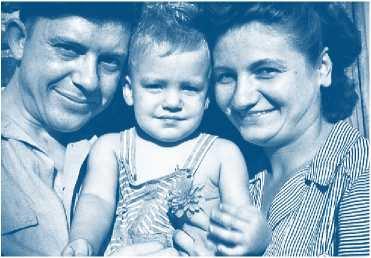
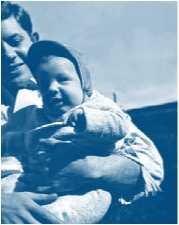
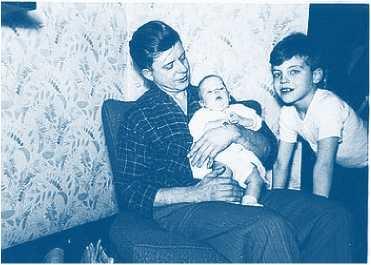

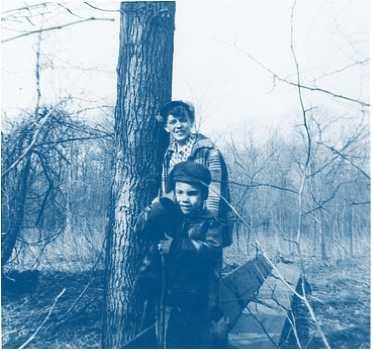
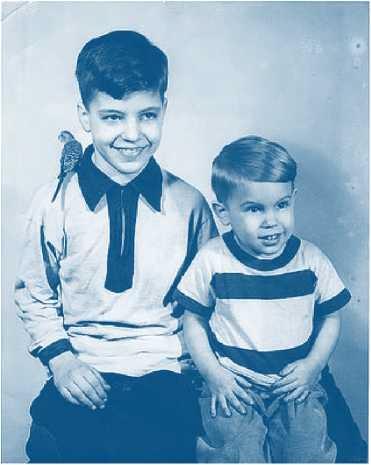
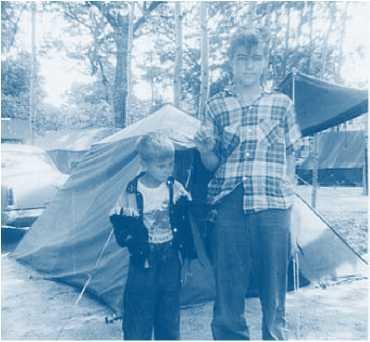
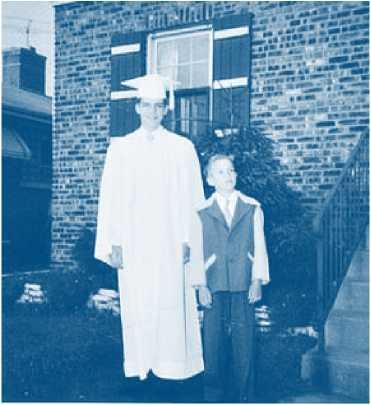
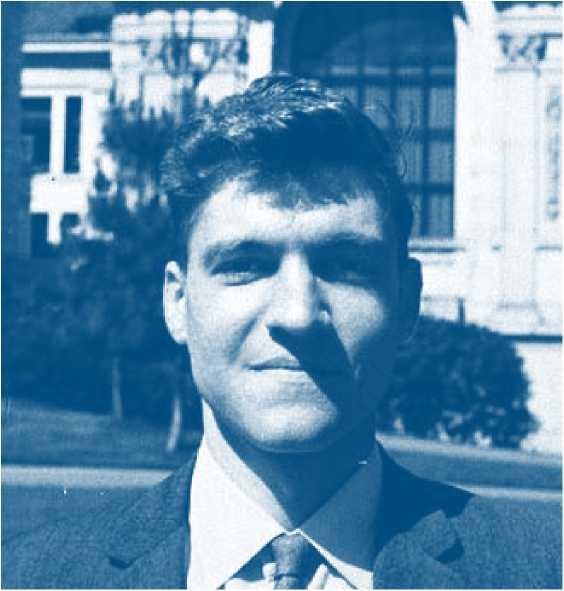
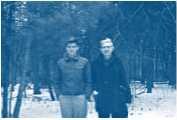
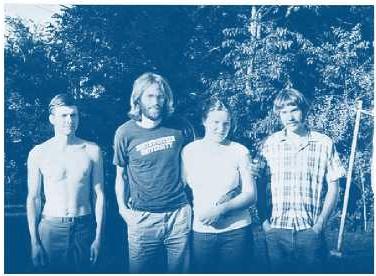
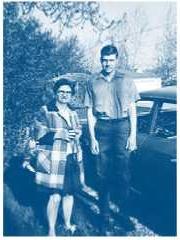
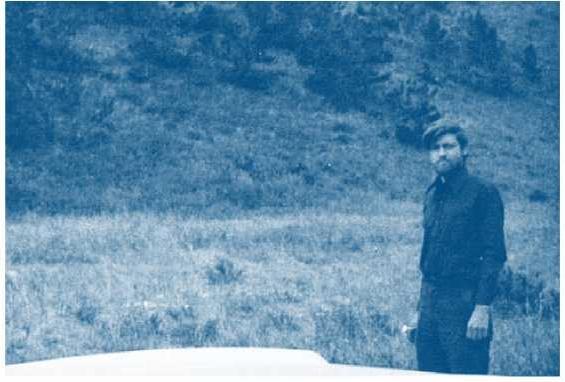
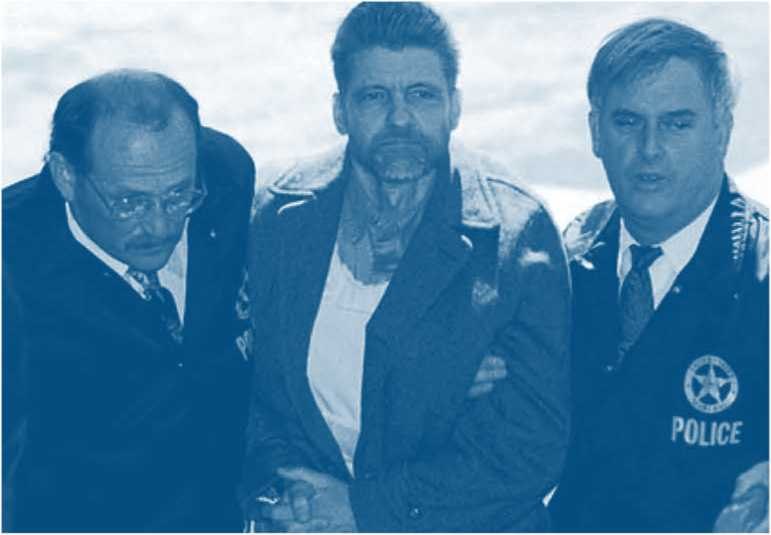
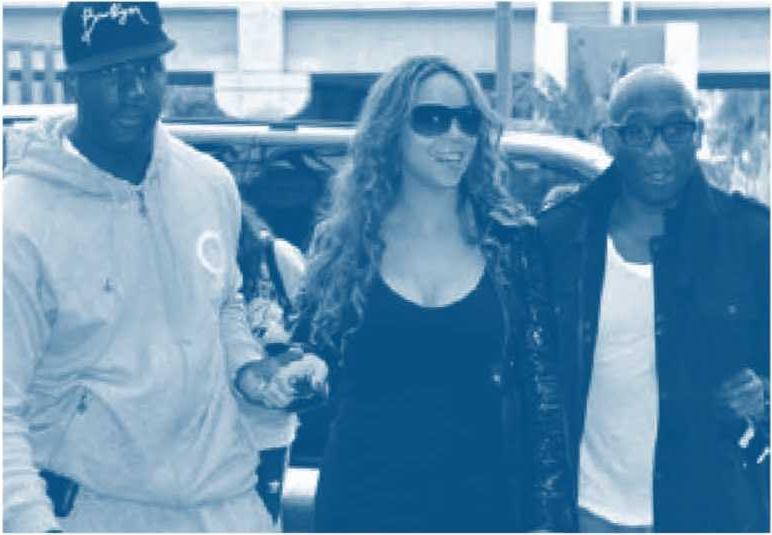
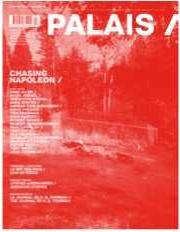
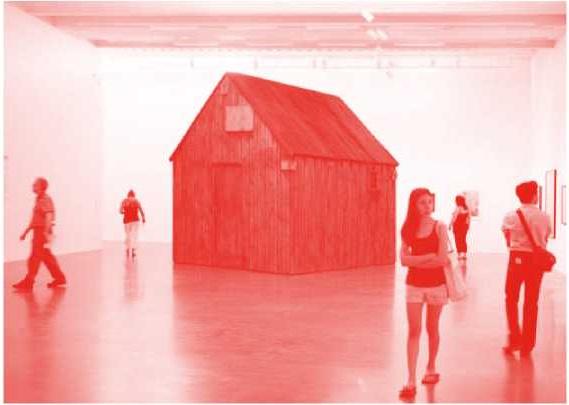
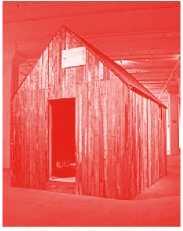
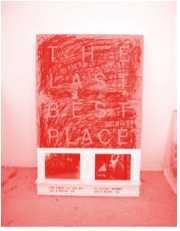
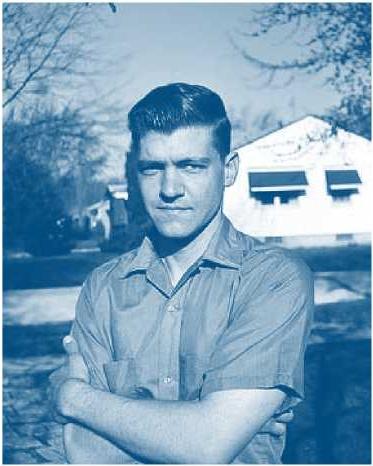
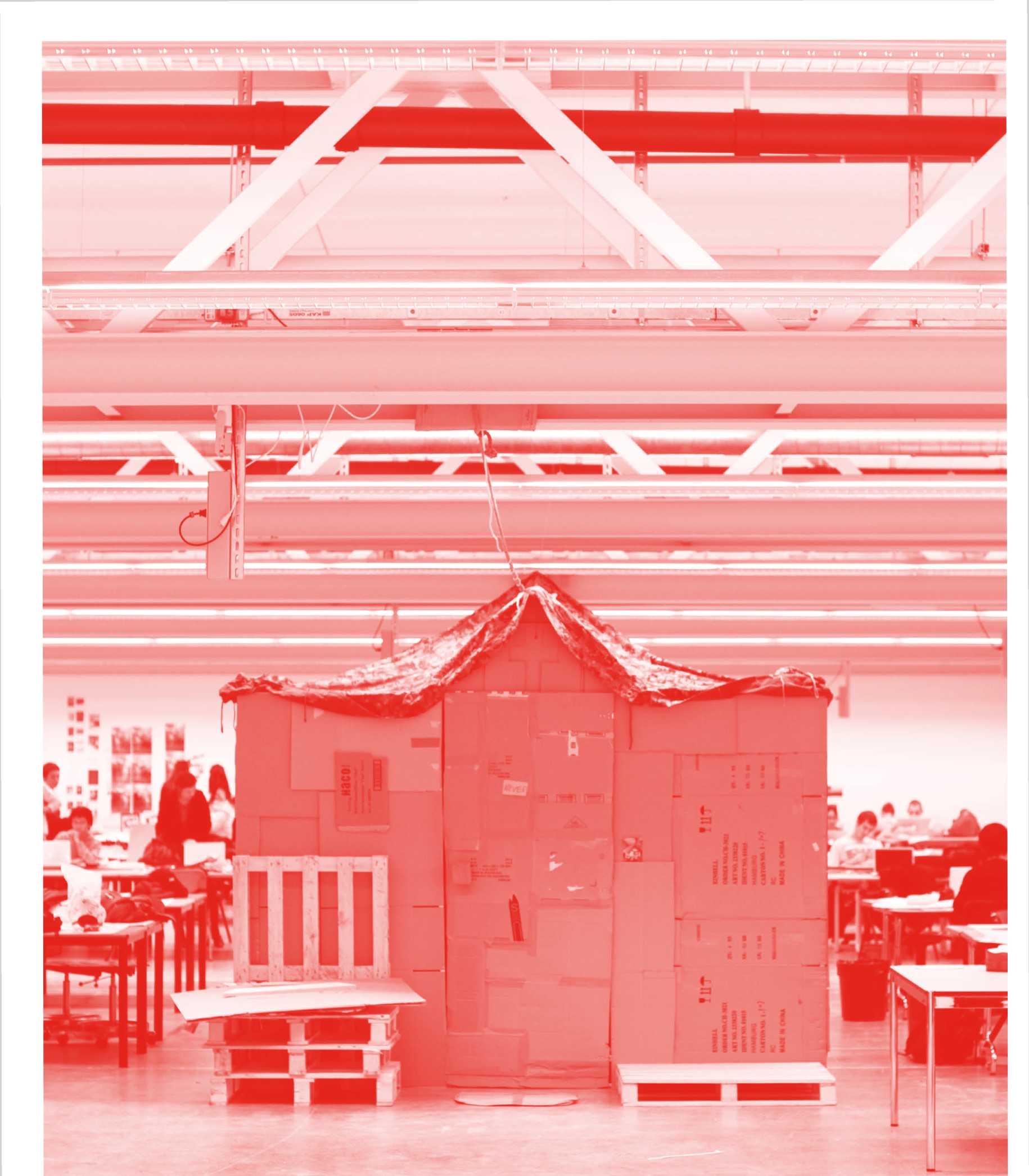
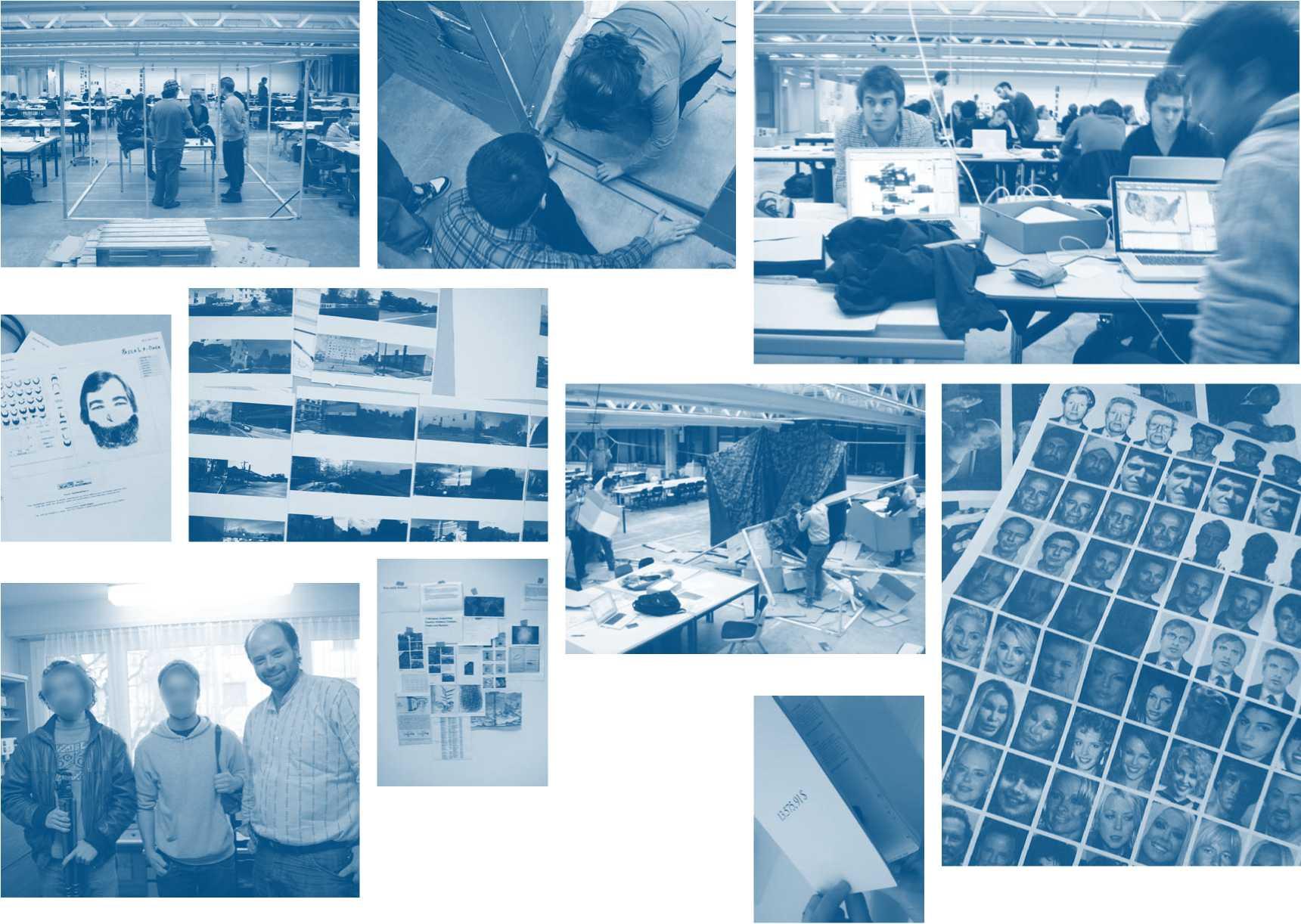

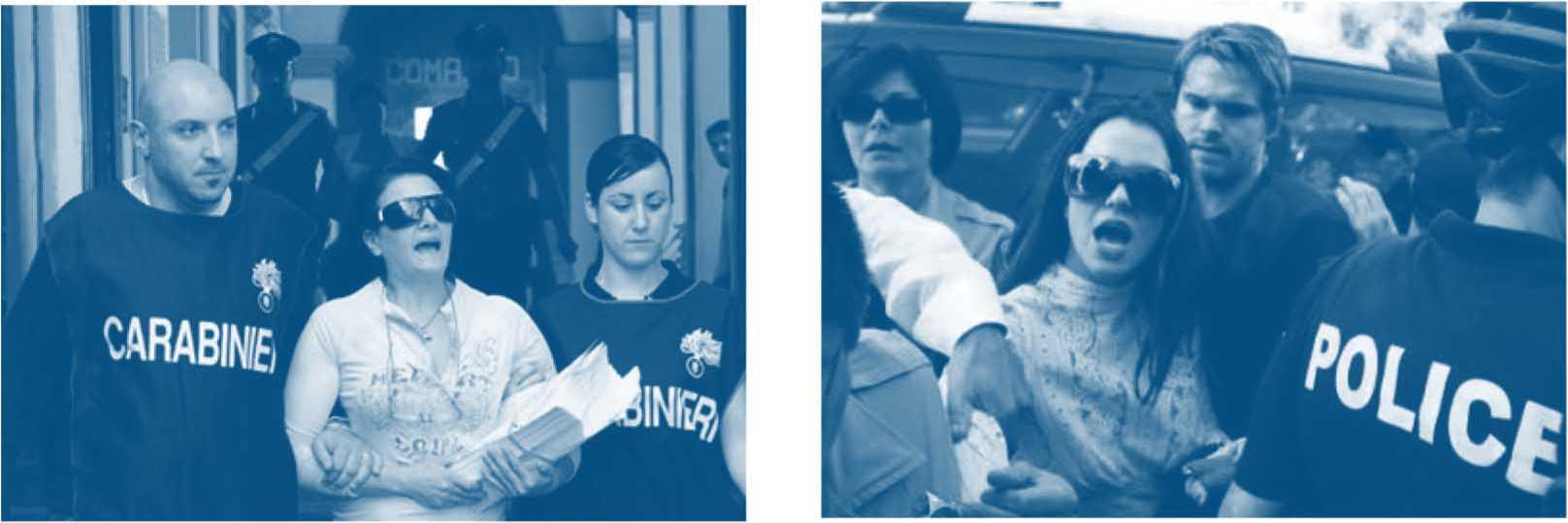
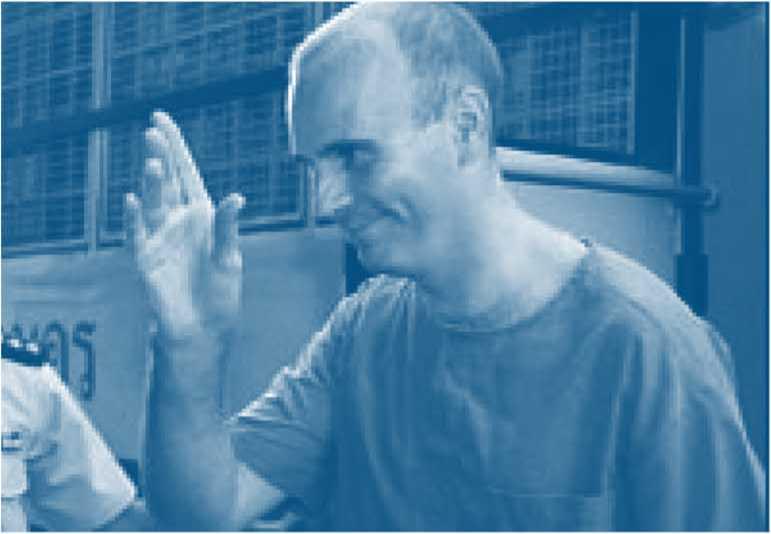
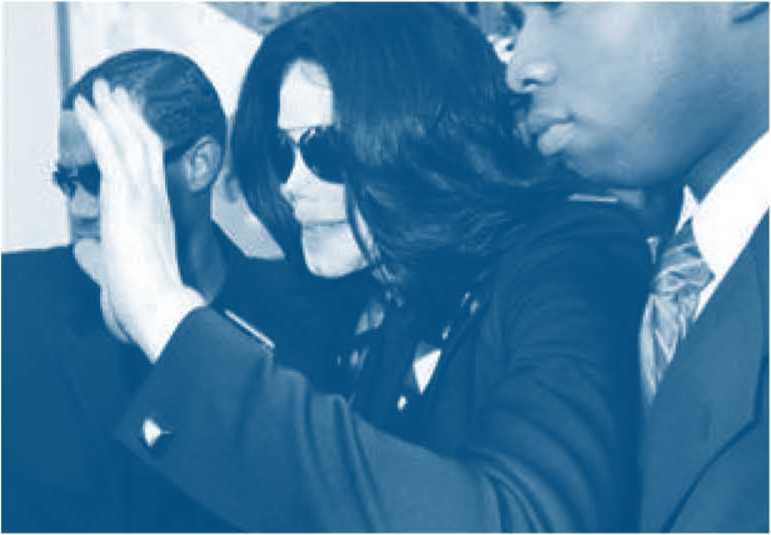
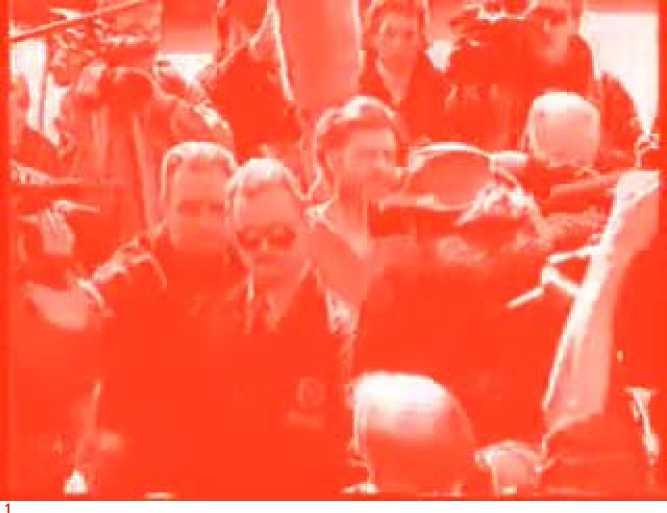
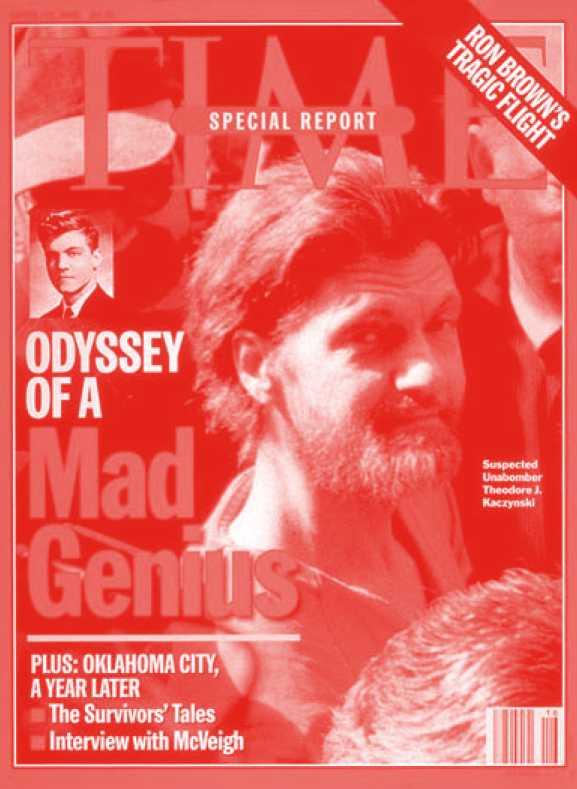
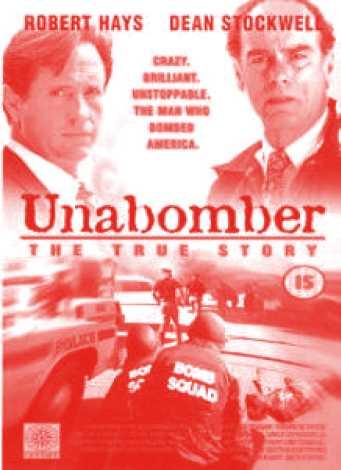
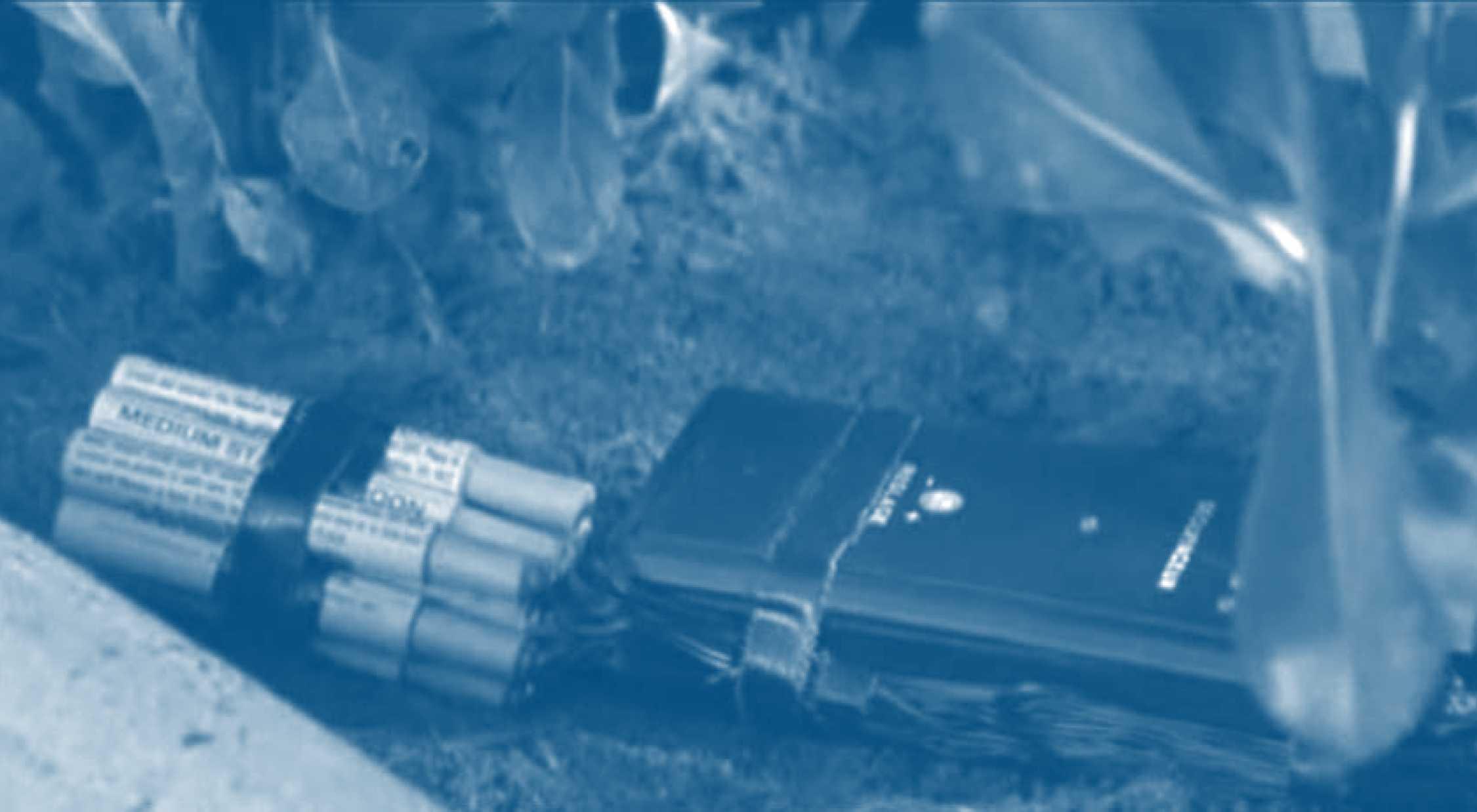
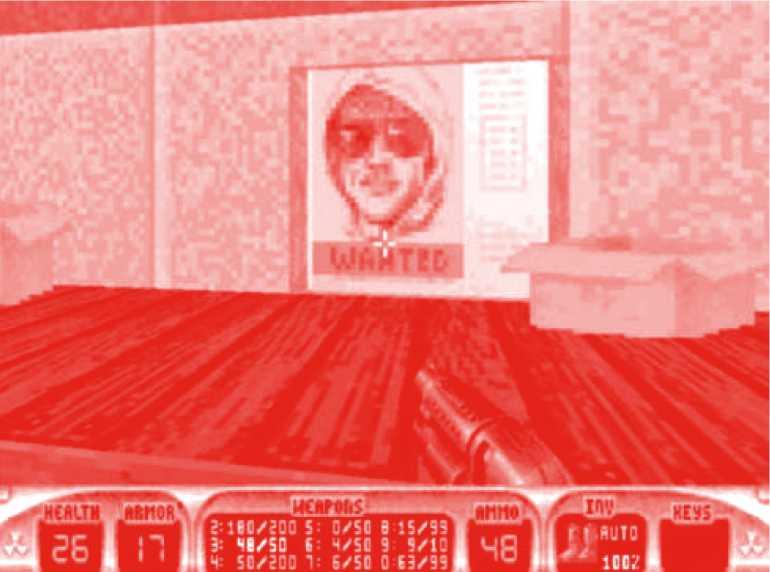

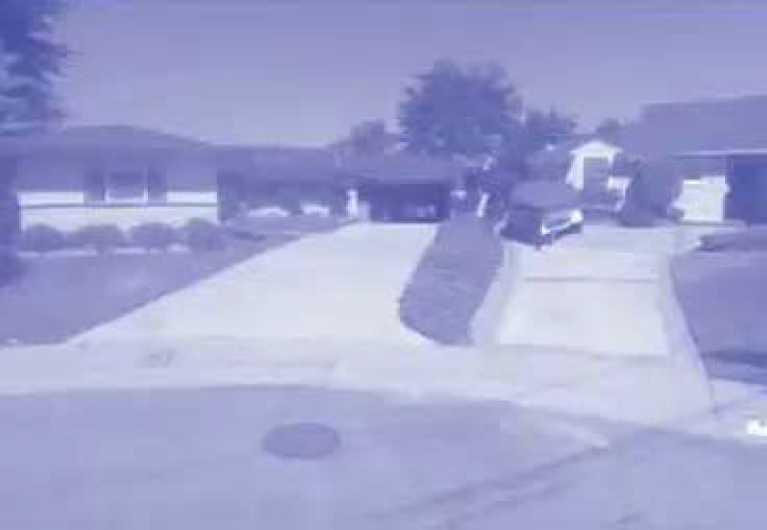
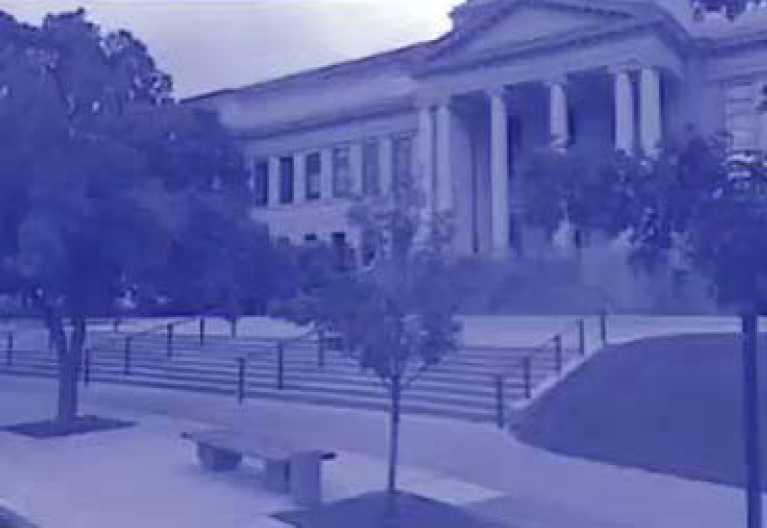
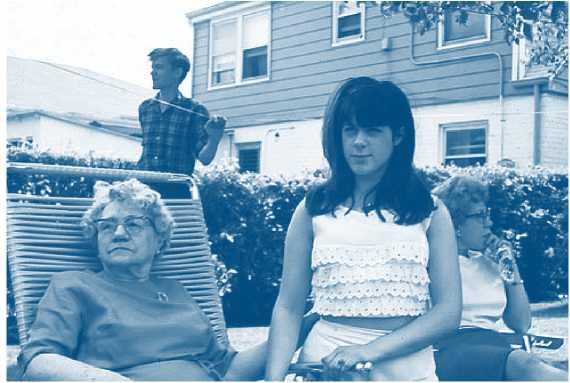
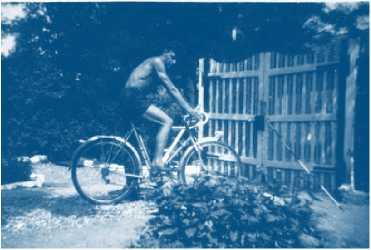
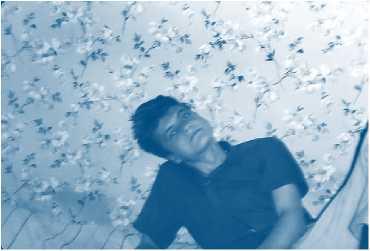
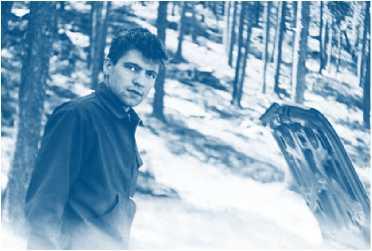
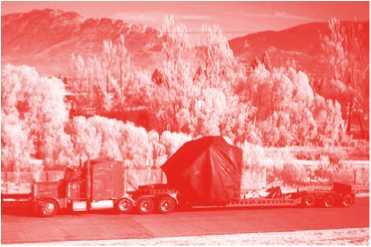
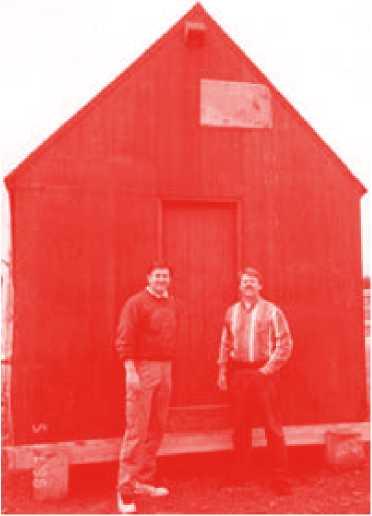
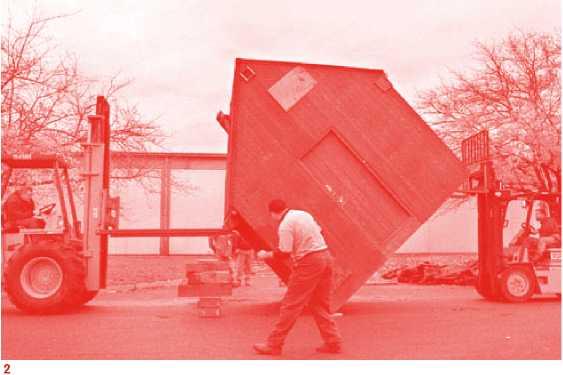
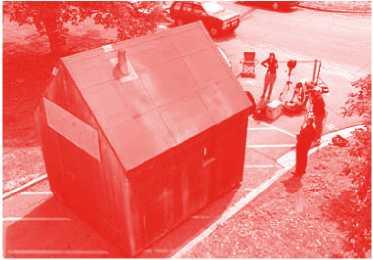
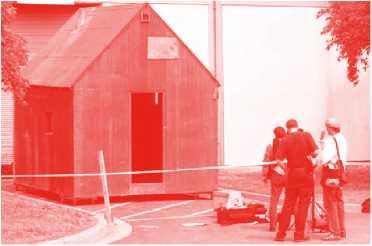
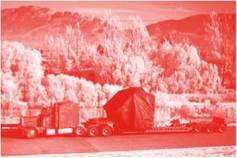
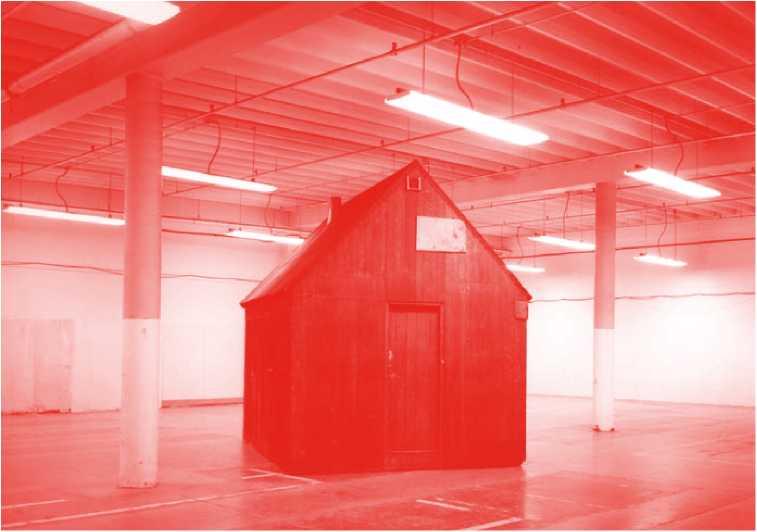

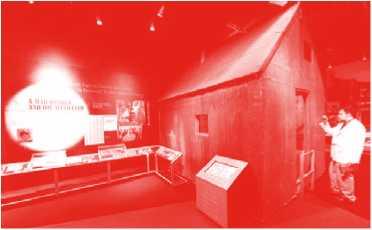
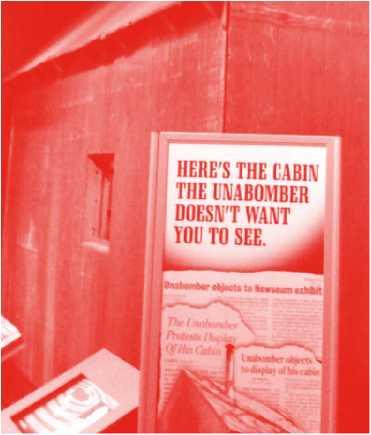
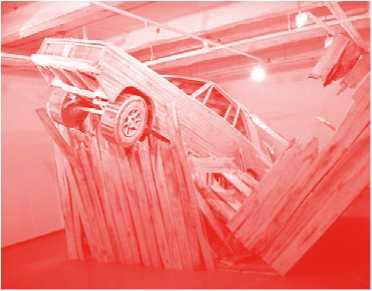


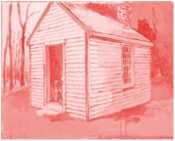


[1] Wired magazine, April 2000.
[2] Published by William Heineman, 2003.
[3] Oxford University Press, 2004.
[4] El perfil del hombre y la cultura en Mexico, decima edicion, EspasaCalpe Mexicana, Mexico City, 1982 (originally published in 1934), pages 104-105.
[5] See Paul Hollander. The Survival of the Adversary Culture.
[6] The process is ably documented by Martha F. Lee, Earth First!: Environmental Apocalypse, Syracuse University Press. 1995.
[7] Lutz Dammbeck, “The Network”, 2004
[8] Bill Joy, “Why the Future Doesn’t Need Us,” Wired Magazine, April 2000.
Martin Rees, Our Final Century, William Heineman, 2003
Richard A. Posner, “Catastrophe: Risk and Response,” Oxford University Press, 2005
[9] Theodore J. Kaczynski, “The Road To Revolution,” Xenia Press, 2008
[10] Barack Obama after the am 5 January 2010 narrowly foiled attack on a passenger plane: “The system has failed in a potentially disastrous way”
